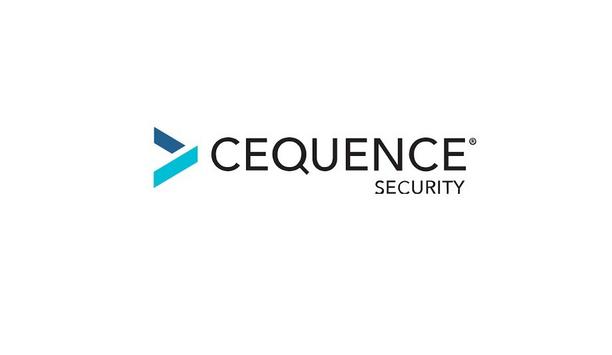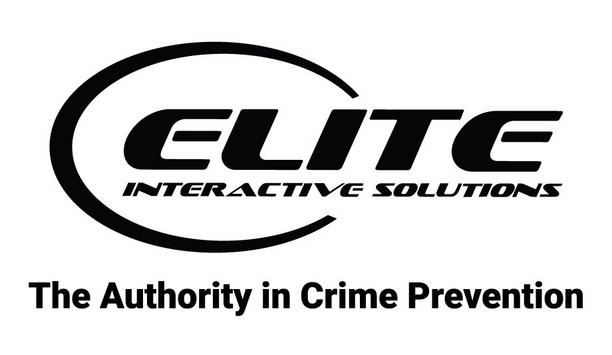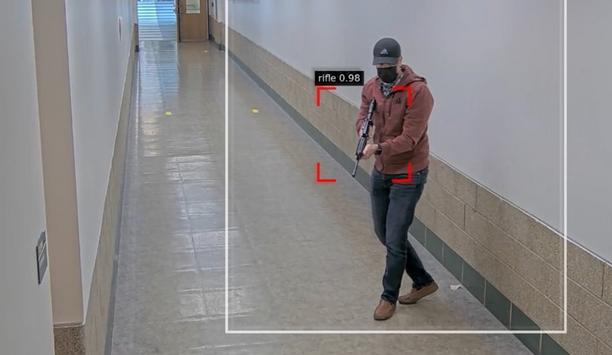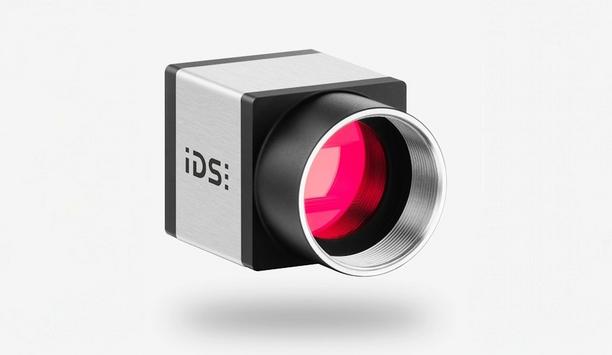Corporate Security
Colt Technology Services (Colt), the digital infrastructure company, announced an expansion to its multi-award winning On Demand Network as a Service (NaaS) platform with the addition of new features designed to enhance businesses’ cloud services, boost resilience and provide greater autonomy for organisations needing flexibility, security and choice in the dynamic market environment. The three new features - available now - are On Demand Diversity, Dedicated Cloud Ports and new Multi-Ven...
Cisco has made several transformative innovation and partnership announcements that will help security professionals secure and harness the power of AI. An increasingly sophisticated threat landscape combined with an expanding talent shortage means the need has never been greater for machine scale security and response. According to Cisco’s upcoming 2025 Cybersecurity Readiness Index, companies worldwide underestimate the complexities of securing AI, with 86% saying their organisations ha...
Cequence Security, a pioneer in API security and bot management, announces significant enhancements to its Unified API Protection (UAP) platform to deliver the industry’s first comprehensive security solution for agentic AI development, usage, and connectivity. This enhancement empowers organisations to secure every AI agent interaction, regardless of the development framework. By implementing robust guardrails, the solution protects both enterprise-hosted AI applications and external AI...
Abnormal AI (Abnormal Security), the globally renowned company in AI-native human behaviour security, has unveiled its most ambitious product release to date — introducing autonomous AI agents that revolutionise how organisations train employees and report on risk, while also evolving its email security capabilities to continue to stop the world’s most advanced email attacks. In a year defined by the explosive use of malicious AI for cybercrime, Abnormal is doubling down on its miss...
Reversec launches as a new name in cybersecurity consulting, dedicated to helping businesses overcome their most complex security challenges. Formerly known as the Consulting unit of WithSecure, Reversec focuses on turning pioneering research into practical solutions that help organisations stay ahead of threats. With an emphasis on offensive, proactive, strategies, Reversec ensures businesses are prepared to tackle evolving security risks. By combining deep industry experience with a commitmen...
Elite Interactive Solutions, a remote video guarding pioneer using proprietary intelligence and integration to achieve proven crime and catastrophe prevention, announces that the company was selected this month as one of three finalists for The Monitoring Association’s (TMA) 2025 Excellence Awards. The prestigious program nominated Elite for its highest honour, Monitoring Centre of the Year. The TMA Excellence Awards recognise any FM-Approved, Intertek/ETL or UL‐Listed monitoring centre a...
News
Frequentis Germany has been awarded the contract to plan and supply the operations and control centre system for the police of the Free State of Thuringia. As a general contractor, Frequentis is responsible for the installation and commissioning of all system components. These include Frequentis’ 3020 LifeX communication system, an operations control system from T-Systems Information Services GmbH, and the IT and network infrastructure provided by Siemens AG. Integrated communications system With the integrated operations and control centre system, the Thuringian police will be provided with a state-wide standardised and future-oriented solution for emergency call handling and managing police operations in daily service and special situations. Integrated communications system is prepared for the connection to the future nationwide broadband digital “By awarding this contract, we have reached an important milestone in the implementation of the Thuringian police's digitalisation concept. We are now taking a major step towards modern, future-proof control centre technology. The new system will further optimise our operational coordination and thus ensure the improved safety of the citizens of Thuringia,” explains Thomas Quittenbaum, Vice President at the Thuringian state police directorate. The integrated communications system is already prepared for the connection to the future nationwide broadband digital radio system for authorities and organisations with security tasks. Digital transformation “As general contractor, Frequentis has the overall responsibility for the successful implementation of this important project. We are ensuring that all components of the operations and control centre system interact perfectly." "With the commissioned technologically mature, highly available, and secure solution, we are supporting the digital transformation of the state police of the Free State of Thuringia,” says Marcel Haar, Managing Director Frequentis Germany. With this contract, Frequentis further expands the company's pioneering market position: police organisations in more than half of all German federal states already rely on the innovative technological and conceptual capabilities of the global corporation.
Global cybersecurity provider Hornetsecurity has partnered with Amazon to provide Amazon Simple Email Service (SES) Mail Manager customers with its Vade Advanced Email Security Add-On. Utilising AI technologies, this add-on allows customers of Amazon Mail Manager to scan and protect inbound and outbound email traffic. Amazon SES for email contacts Hornetsecurity's Vade Advanced Email Security Add-On for Amazon SES Mail Manager offers automated, real-time protection against spam, malware and phishing attacks to help establish safe communication through advanced threat detection, behaviour analysis, patented AI technology, real-time scanning and seamless integration. This essential functionality has now been made available for online businesses that utilise Amazon SES for email communications, transactions and marketing. This includes email sender platforms and corporate marketing and transactional departments. Hornetsecurity's Vade advanced email security add-on Amazon SES is a cloud-based email service that helps clients automate email communications Amazon SES is a cloud-based email service that helps customers automate high-volume email communications seamlessly. Amazon SES Mail Manager is a comprehensive email management solution that provides organisations with advanced control and oversight of their email operations. This service enhances Amazon SES with additional features for managing email campaigns and monitoring delivery performance, including: A centralised dashboard for email campaign management Advanced analytics and reporting tools for tracking email performance A template management system for consistent email communications Automated bounce handling and list management Scalable infrastructure to support high-volume email sending Security policies and add-ons Amazon Mail Manager for SES allows customers to manage their own security policies and add-ons, paying for the additional flexibility and control they need. Through this partnership, Hornetsecurity's Vade Advanced Email Security Add-On is now included as an email security option that customers can add on to this solution. AI-driven security engine Hornetsecurity's Vade Advanced Email Security Add-On showcases a notable step forward The availability of Hornetsecurity's Vade Advanced Email Security Add-On showcases a significant step forward in email security for Amazon SES Mail Manager customers. The combination of an AI-driven security engine with the management capabilities of the Mail Manager will assist in enhancing customer defense against email threats while maintaining total control over email workflows. Amazon SES for email transactions and marketing "We are thrilled that Amazon has chosen to partner with Hornetsecurity Group to provide their SES Mail Manager customers with a seamless and powerful email security solution within the AWS environment," Hornetsecurity CEO Daniel Hofmann said. "This will be a game-changer for the security of businesses that use Amazon SES for email transactions and marketing."
Everon, a pioneering security integrator and premier provider of commercial security, video, fire and life safety solutions in the U.S., announced the promotion of Chris Heugle to Senior Vice President, Commercial Sales & Integrated Solutions, and Greg Mastroserio to Vice President, Commercial & Integrated Solutions Sales to lead companywide strategic sales initiatives. With nearly 20 years of industry experience, Heugle will now oversee Everon’s overarching sales strategy, bringing a proven track record of enterprise leadership and a deep understanding of customer needs. This includes extensive experience with trusted security providers, including Access Systems Integration, ADT Commercial, and more. Prior roles of Heugle Heugle will focus on driving sales growth, enhancing the customer experience in every interaction In his most recent role as Vice President, Integrated Solutions for Everon, he was instrumental in aligning the company’s Integrated Solutions team with sales and support functions to address some of the most complex challenges faced by customers. In his new role, Heugle will focus on driving sales growth, enhancing the customer experience in every interaction and elevating Everon’s positioning in the commercial and integrated solutions space. Everon’s commercial and integrated solutions Mastroserio, who also brings two decades of industry expertise – including roles at Deterrent Technologies, Schneider Electric, and ADT Commercial – has consistently driven growth and customer success in sales leadership positions. As Vice President, Commercial & Integrated Solutions Sales, Mastroserio will lead strategic sales initiatives for the organisation, further expanding Everon’s commercial and integrated solutions offerings while driving exceptional results for customers. Everon’s customer partnerships Heugle and Mastroserio drove success across their joint decades of experience giving enterprise solutions Heugle and Mastroserio drove success across their collective decades of experience delivering enterprise solutions for some of the industry’s most complex integration projects, including large-scale data centres, healthcare systems, national retailers, and more. Their wide-ranging expertise will help to extend the value of Everon’s customer partnerships and deliver quality, tech-forward solutions to commercial environments across industries. Everon’s position as a trusted partner “Appointing proven industry pioneers like Chris and Greg reflects our ongoing commitment to delivering greater value to our customers, beginning with and extending well beyond the sales process,” said Mike McWilliams, President and Chief Operating Officer of Everon. “Their customer-centric approach and technical expertise ensures that we continue to provide seamless, high-quality solutions throughout every stage of the customer journey. Their leadership will reinforce Everon’s position as a trusted partner for businesses nationwide.”
Hikvision has announced its full-year financial results for 2024 and first-quarter results for 2025. In 2024, the company reported total revenue of RMB 92.496 billion, marking a 3.53% year‑over‑year (YoY) growth. In the first quarter of 2025, the company reported revenue of RMB 18.532 billion, up 4.01% YoY. Net profit attributable to shareholders reached RMB 2.039 billion, reflecting a 6.41% YoY increase. Overseas markets and innovative businesses Hikvision has established itself as a security pioneer, developing a robust AIoT ecosystem Over the past two decades, Hikvision has established itself as a security pioneer, developing a robust AIoT ecosystem encompassing over 30,000 products. The company remains committed to steady and solid progress, navigating uncertainties with a positive and prudent approach. It maintained its pioneering position in the domestic security market while seeking growth from overseas markets and innovative businesses. Large-scale AI model technologies With profitability as a central focus, the company is driving organisational transformation and refining management practices to support long-term, sustainable growth. Notably, Hikvision is at the forefront of leveraging breakthroughs in large-scale AI model technologies to accelerate scenario-based digitalisation across diverse industries. Throughout the past year, the company strengthened its overseas presence, with main business revenue from international markets rising to RMB 25.989 billion, accounting for 28.10% of total revenue and reflecting an 8.39% YoY growth. Hikvision’s innovation businesses Hikvision’s innovation businesses continued to grow rapidly, with revenue reaching RMB 22.484 billion Hikvision’s overseas revenue spans over 180 countries and regions, with developing markets contributing more than 70% of that total. The steady increase of overseas business revenue has emerged as an important driver of the company’s overall profit growth. Meanwhile, Hikvision’s innovation businesses continued to grow rapidly, with revenue reaching RMB 22.484 billion. In 2024, Hikvision continued to prioritise research and development, investing RMB 11.864 billion in R&D, accounting for 12.83% of its total revenue. Over the years, the company has built a multi-level R&D system with the headquarters’ R&D capabilities at the core, radiating to key regions both domestically and internationally. Advancing AIoT technologies In its latest developments, Hikvision is actively advancing AIoT technologies, with its Guanlan Large-Scale AI Models integrating vision, language, and multimodal capabilities, among others. These innovations have significantly enhanced both perception and cognition abilities of Hikvision’s products and solutions. For instance, in perimeter protection, the large vision model can achieve a 90% reduction in false alarms. Looking ahead, Hikvision is committed to a strategy of high-quality growth, with a stronger focus on driving innovation, enhancing efficiency and ensuring long-term sustainability.
Cowbell, a pioneering provider of cyber insurance for small and medium-sized enterprises (SMEs) and middle-market businesses, announced the UK launch of Prime One Tech; professional indemnity and cyber coverage for technology companies with up to £1 billion in annual turnover, providing limits of up to £5 million. Prime One Tech combines Cowbell’s flagship Prime One cyber programme with specialised PI technology coverage. It is enhanced by Cowbell Co-Pilot, a Generative AI-powered tool that streamlines underwriting workflows, reducing contract review time by up to 40%. UK’s cyberspace UK boasts the third-largest technology ecosystem, valued at a landmark £902 billion this year The UK boasts the third-largest technology ecosystem globally, valued at a landmark £902 billion this year, and leads Europe in tech market valuation and investment. However, the UK’s cyberspace has also seen hostile activity rise in frequency, sophistication, and intensity recently; up 16% in 2024 compared to the previous year. Risks faced by technology businesses Prime One Tech is designed to meet the specific needs of this segment as well as demands from the broker community to provide tailored solutions that address the broader risks faced by technology businesses. Additionally, Cowbell offers robust in-house claims capabilities, ensuring fast, expert-driven response and support tailored to the unique needs of policyholders in the UK. Key features With no exclusions for proofs, consequential damages, or breach of warranties and no restrictions tied Key features include: coverage for professional indemnity, cyber crime, loss of data or documents, breach of contract, intellectual property infringement, subcontractors, cyber first and third party, media liability, mitigation costs, and unpaid invoices. With no exclusions for guarantees, consequential damages, or breach of warranties and no restrictions tied to business descriptions, it offers unparalleled flexibility and robust risk transfer. Cyber threats and operational challenges Marking the company’s first move beyond standalone cyber insurance in the UK, Claud Bilbao, RVP, Underwriting & Distribution at Cowbell UK, comments on the new launch: “The UK has a robust technology sector that faces an increasingly complex array of both cyber threats and operational challenges.These companies - whether software, hardware, communication, or technology service businesses - need more than just general PI insurance." "They need tailored, innovative solutions that keep pace with the industry’s rapid evolution. With Prime One Tech, we’re delivering exactly that: a comprehensive, adaptive solution covering risks like data breaches, software failures, cyber loss and liability, empowering technology companies to thrive with confidence.” Access to Cowbell’s patented platform Prime One Tech policyholders also get access to Cowbell’s patented platform, which includes: Cowbell Factors™: Enabling competitive pricing and optimised premiums for businesses with stronger risk profiles, Cowbell’s proprietary risk rating factors assess an organisation’s cyber risk across eight categories, based on data from over 47 million businesses in the UK, US, and Japan. Cowbell Insights™: Provides real-time recommendations to help policyholders address cybersecurity weaknesses and improve their risk ratings. The platform also sends alerts about emerging cyber threats and offers guidance on protective measures. Cybersecurity training: Includes phishing simulations and awareness courses at no extra cost for the first 12 months after policy inception. Further developing of digital distribution capabilities Following its UK market entry in 2023 and the launch of its standalone cyber programme, Cowbell Prime One in September, this latest move is supported by partnerships with A+ rated (re)insurers and Cowbell’s recent $60 million investment from Zurich. Bilbao adds: “Looking ahead, our experienced team of underwriters is looking forward to deepening relationships with brokers who specialise in technology accounts and further developing our digital distribution capabilities to better serve the UK market.”
Rapid7, Inc., a pioneer in extended risk and threat detection, announced the launch of Managed Detection & Response (MDR) for Enterprise, a fully managed and customisable detection and response service designed to meet the unique demands of complex, distributed enterprise environments. Modern enterprises operate across sprawling digital environments spanning cloud, on-premises, legacy systems, and proprietary applications. Rapid7’s global SOC For some organisations, standard MDR services can fall short in these environments, leaving visibility gaps and creating operational friction. MDR for Enterprise fills that gap, combining meaningful customisation and flexibility, collaborative delivery, and deeply tailored detection engineering with full-service 24x7 protection from Rapid7’s global SOC. Rapid7 MDR’s proven ability MDR for Enterprise is built on continuous collaboration between the Rapid7 SOC and internal teams A powerful expansion of Rapid7’s pioneering MDR offering, MDR for Enterprise is built on continuous collaboration between the Rapid7 SOC and internal teams within organisations. This new service capability combines Rapid7 MDR’s proven ability to layer deep, native visibility across endpoint, network, identities, and third-party alert streams with custom coverage that is specially tailored to each enterprise’s unique environment. By optimising the organization-specific telemetry with 24/7 detection coverage and monitoring, Rapid7 stands ready to transform organisations’ security operations processes. Standard approach to detection and response “Today, large security teams demand more than a standard approach to detection and response. They’re looking for the confidence to move faster, respond smarter, and defend deeper,” said Craig Adams, chief product officer at Rapid7. “With MDR for Enterprise, we’re delivering broad visibility and coverage with the deep customisation and operational partnership.” Rapid7’s MDR for Enterprise “The ability to integrate proprietary systems, leverage internal detections, and align directly with operational workflows is becoming essential." "Organisations that are shifting to this style of partnership model, like Rapid7’s MDR for Enterprise, are doing so to keep pace with evolving threats and continually distributed infrastructure,” said Craig Robinson, research vice president, security services, IDC. Additional capabilities Custom Event Source Integration: Proprietary, vertical-specific, and legacy systems are fully integrated into the MDR workflow, providing comprehensive situational awareness, reduced dwell time, and greater return on existing security investments. Customized Detections: Detection logic tailored to an organization’s specific tools, telemetry, and risk profile. ensures complete visibility across unique environments and reduces risk from previously unmonitored systems. Tailored Threat Monitoring: Continuous monitoring is extended to in-house and non-standard systems, enabling earlier detection of attacker behaviours through correlation across endpoint, cloud, network, and user layers. Engagement Model & Collaboration: Rapid7’s SOC establishes shared workflows and response protocols with internal teams to eliminate handoffs, streamline communication, and accelerate incident response. To learn more about MDR for Enterprise, vist the website or meet at the RSA Conference in San Francisco, April 28-May 1.
Frequentis Germany has been awarded the contract to plan and supply the operations and control centre system for the police of the Free State of Thuringia. As a general contractor, Frequentis is responsible for the installation and commissioning of all system components. These include Frequentis’ 3020 LifeX communication system, an operations control system from T-Systems Information Services GmbH, and the IT and network infrastructure provided by Siemens AG. Integrated communications system With the integrated operations and control centre system, the Thuringian police will be provided with a state-wide standardised and future-oriented solution for emergency call handling and managing police operations in daily service and special situations. Integrated communications system is prepared for the connection to the future nationwide broadband digital “By awarding this contract, we have reached an important milestone in the implementation of the Thuringian police's digitalisation concept. We are now taking a major step towards modern, future-proof control centre technology. The new system will further optimise our operational coordination and thus ensure the improved safety of the citizens of Thuringia,” explains Thomas Quittenbaum, Vice President at the Thuringian state police directorate. The integrated communications system is already prepared for the connection to the future nationwide broadband digital radio system for authorities and organisations with security tasks. Digital transformation “As general contractor, Frequentis has the overall responsibility for the successful implementation of this important project. We are ensuring that all components of the operations and control centre system interact perfectly." "With the commissioned technologically mature, highly available, and secure solution, we are supporting the digital transformation of the state police of the Free State of Thuringia,” says Marcel Haar, Managing Director Frequentis Germany. With this contract, Frequentis further expands the company's pioneering market position: police organisations in more than half of all German federal states already rely on the innovative technological and conceptual capabilities of the global corporation.
Global cybersecurity provider Hornetsecurity has partnered with Amazon to provide Amazon Simple Email Service (SES) Mail Manager customers with its Vade Advanced Email Security Add-On. Utilising AI technologies, this add-on allows customers of Amazon Mail Manager to scan and protect inbound and outbound email traffic. Amazon SES for email contacts Hornetsecurity's Vade Advanced Email Security Add-On for Amazon SES Mail Manager offers automated, real-time protection against spam, malware and phishing attacks to help establish safe communication through advanced threat detection, behaviour analysis, patented AI technology, real-time scanning and seamless integration. This essential functionality has now been made available for online businesses that utilise Amazon SES for email communications, transactions and marketing. This includes email sender platforms and corporate marketing and transactional departments. Hornetsecurity's Vade advanced email security add-on Amazon SES is a cloud-based email service that helps clients automate email communications Amazon SES is a cloud-based email service that helps customers automate high-volume email communications seamlessly. Amazon SES Mail Manager is a comprehensive email management solution that provides organisations with advanced control and oversight of their email operations. This service enhances Amazon SES with additional features for managing email campaigns and monitoring delivery performance, including: A centralised dashboard for email campaign management Advanced analytics and reporting tools for tracking email performance A template management system for consistent email communications Automated bounce handling and list management Scalable infrastructure to support high-volume email sending Security policies and add-ons Amazon Mail Manager for SES allows customers to manage their own security policies and add-ons, paying for the additional flexibility and control they need. Through this partnership, Hornetsecurity's Vade Advanced Email Security Add-On is now included as an email security option that customers can add on to this solution. AI-driven security engine Hornetsecurity's Vade Advanced Email Security Add-On showcases a notable step forward The availability of Hornetsecurity's Vade Advanced Email Security Add-On showcases a significant step forward in email security for Amazon SES Mail Manager customers. The combination of an AI-driven security engine with the management capabilities of the Mail Manager will assist in enhancing customer defense against email threats while maintaining total control over email workflows. Amazon SES for email transactions and marketing "We are thrilled that Amazon has chosen to partner with Hornetsecurity Group to provide their SES Mail Manager customers with a seamless and powerful email security solution within the AWS environment," Hornetsecurity CEO Daniel Hofmann said. "This will be a game-changer for the security of businesses that use Amazon SES for email transactions and marketing."
Everon, a pioneering security integrator and premier provider of commercial security, video, fire and life safety solutions in the U.S., announced the promotion of Chris Heugle to Senior Vice President, Commercial Sales & Integrated Solutions, and Greg Mastroserio to Vice President, Commercial & Integrated Solutions Sales to lead companywide strategic sales initiatives. With nearly 20 years of industry experience, Heugle will now oversee Everon’s overarching sales strategy, bringing a proven track record of enterprise leadership and a deep understanding of customer needs. This includes extensive experience with trusted security providers, including Access Systems Integration, ADT Commercial, and more. Prior roles of Heugle Heugle will focus on driving sales growth, enhancing the customer experience in every interaction In his most recent role as Vice President, Integrated Solutions for Everon, he was instrumental in aligning the company’s Integrated Solutions team with sales and support functions to address some of the most complex challenges faced by customers. In his new role, Heugle will focus on driving sales growth, enhancing the customer experience in every interaction and elevating Everon’s positioning in the commercial and integrated solutions space. Everon’s commercial and integrated solutions Mastroserio, who also brings two decades of industry expertise – including roles at Deterrent Technologies, Schneider Electric, and ADT Commercial – has consistently driven growth and customer success in sales leadership positions. As Vice President, Commercial & Integrated Solutions Sales, Mastroserio will lead strategic sales initiatives for the organisation, further expanding Everon’s commercial and integrated solutions offerings while driving exceptional results for customers. Everon’s customer partnerships Heugle and Mastroserio drove success across their joint decades of experience giving enterprise solutions Heugle and Mastroserio drove success across their collective decades of experience delivering enterprise solutions for some of the industry’s most complex integration projects, including large-scale data centres, healthcare systems, national retailers, and more. Their wide-ranging expertise will help to extend the value of Everon’s customer partnerships and deliver quality, tech-forward solutions to commercial environments across industries. Everon’s position as a trusted partner “Appointing proven industry pioneers like Chris and Greg reflects our ongoing commitment to delivering greater value to our customers, beginning with and extending well beyond the sales process,” said Mike McWilliams, President and Chief Operating Officer of Everon. “Their customer-centric approach and technical expertise ensures that we continue to provide seamless, high-quality solutions throughout every stage of the customer journey. Their leadership will reinforce Everon’s position as a trusted partner for businesses nationwide.”
Hikvision has announced its full-year financial results for 2024 and first-quarter results for 2025. In 2024, the company reported total revenue of RMB 92.496 billion, marking a 3.53% year‑over‑year (YoY) growth. In the first quarter of 2025, the company reported revenue of RMB 18.532 billion, up 4.01% YoY. Net profit attributable to shareholders reached RMB 2.039 billion, reflecting a 6.41% YoY increase. Overseas markets and innovative businesses Hikvision has established itself as a security pioneer, developing a robust AIoT ecosystem Over the past two decades, Hikvision has established itself as a security pioneer, developing a robust AIoT ecosystem encompassing over 30,000 products. The company remains committed to steady and solid progress, navigating uncertainties with a positive and prudent approach. It maintained its pioneering position in the domestic security market while seeking growth from overseas markets and innovative businesses. Large-scale AI model technologies With profitability as a central focus, the company is driving organisational transformation and refining management practices to support long-term, sustainable growth. Notably, Hikvision is at the forefront of leveraging breakthroughs in large-scale AI model technologies to accelerate scenario-based digitalisation across diverse industries. Throughout the past year, the company strengthened its overseas presence, with main business revenue from international markets rising to RMB 25.989 billion, accounting for 28.10% of total revenue and reflecting an 8.39% YoY growth. Hikvision’s innovation businesses Hikvision’s innovation businesses continued to grow rapidly, with revenue reaching RMB 22.484 billion Hikvision’s overseas revenue spans over 180 countries and regions, with developing markets contributing more than 70% of that total. The steady increase of overseas business revenue has emerged as an important driver of the company’s overall profit growth. Meanwhile, Hikvision’s innovation businesses continued to grow rapidly, with revenue reaching RMB 22.484 billion. In 2024, Hikvision continued to prioritise research and development, investing RMB 11.864 billion in R&D, accounting for 12.83% of its total revenue. Over the years, the company has built a multi-level R&D system with the headquarters’ R&D capabilities at the core, radiating to key regions both domestically and internationally. Advancing AIoT technologies In its latest developments, Hikvision is actively advancing AIoT technologies, with its Guanlan Large-Scale AI Models integrating vision, language, and multimodal capabilities, among others. These innovations have significantly enhanced both perception and cognition abilities of Hikvision’s products and solutions. For instance, in perimeter protection, the large vision model can achieve a 90% reduction in false alarms. Looking ahead, Hikvision is committed to a strategy of high-quality growth, with a stronger focus on driving innovation, enhancing efficiency and ensuring long-term sustainability.
Cowbell, a pioneering provider of cyber insurance for small and medium-sized enterprises (SMEs) and middle-market businesses, announced the UK launch of Prime One Tech; professional indemnity and cyber coverage for technology companies with up to £1 billion in annual turnover, providing limits of up to £5 million. Prime One Tech combines Cowbell’s flagship Prime One cyber programme with specialised PI technology coverage. It is enhanced by Cowbell Co-Pilot, a Generative AI-powered tool that streamlines underwriting workflows, reducing contract review time by up to 40%. UK’s cyberspace UK boasts the third-largest technology ecosystem, valued at a landmark £902 billion this year The UK boasts the third-largest technology ecosystem globally, valued at a landmark £902 billion this year, and leads Europe in tech market valuation and investment. However, the UK’s cyberspace has also seen hostile activity rise in frequency, sophistication, and intensity recently; up 16% in 2024 compared to the previous year. Risks faced by technology businesses Prime One Tech is designed to meet the specific needs of this segment as well as demands from the broker community to provide tailored solutions that address the broader risks faced by technology businesses. Additionally, Cowbell offers robust in-house claims capabilities, ensuring fast, expert-driven response and support tailored to the unique needs of policyholders in the UK. Key features With no exclusions for proofs, consequential damages, or breach of warranties and no restrictions tied Key features include: coverage for professional indemnity, cyber crime, loss of data or documents, breach of contract, intellectual property infringement, subcontractors, cyber first and third party, media liability, mitigation costs, and unpaid invoices. With no exclusions for guarantees, consequential damages, or breach of warranties and no restrictions tied to business descriptions, it offers unparalleled flexibility and robust risk transfer. Cyber threats and operational challenges Marking the company’s first move beyond standalone cyber insurance in the UK, Claud Bilbao, RVP, Underwriting & Distribution at Cowbell UK, comments on the new launch: “The UK has a robust technology sector that faces an increasingly complex array of both cyber threats and operational challenges.These companies - whether software, hardware, communication, or technology service businesses - need more than just general PI insurance." "They need tailored, innovative solutions that keep pace with the industry’s rapid evolution. With Prime One Tech, we’re delivering exactly that: a comprehensive, adaptive solution covering risks like data breaches, software failures, cyber loss and liability, empowering technology companies to thrive with confidence.” Access to Cowbell’s patented platform Prime One Tech policyholders also get access to Cowbell’s patented platform, which includes: Cowbell Factors™: Enabling competitive pricing and optimised premiums for businesses with stronger risk profiles, Cowbell’s proprietary risk rating factors assess an organisation’s cyber risk across eight categories, based on data from over 47 million businesses in the UK, US, and Japan. Cowbell Insights™: Provides real-time recommendations to help policyholders address cybersecurity weaknesses and improve their risk ratings. The platform also sends alerts about emerging cyber threats and offers guidance on protective measures. Cybersecurity training: Includes phishing simulations and awareness courses at no extra cost for the first 12 months after policy inception. Further developing of digital distribution capabilities Following its UK market entry in 2023 and the launch of its standalone cyber programme, Cowbell Prime One in September, this latest move is supported by partnerships with A+ rated (re)insurers and Cowbell’s recent $60 million investment from Zurich. Bilbao adds: “Looking ahead, our experienced team of underwriters is looking forward to deepening relationships with brokers who specialise in technology accounts and further developing our digital distribution capabilities to better serve the UK market.”
Rapid7, Inc., a pioneer in extended risk and threat detection, announced the launch of Managed Detection & Response (MDR) for Enterprise, a fully managed and customisable detection and response service designed to meet the unique demands of complex, distributed enterprise environments. Modern enterprises operate across sprawling digital environments spanning cloud, on-premises, legacy systems, and proprietary applications. Rapid7’s global SOC For some organisations, standard MDR services can fall short in these environments, leaving visibility gaps and creating operational friction. MDR for Enterprise fills that gap, combining meaningful customisation and flexibility, collaborative delivery, and deeply tailored detection engineering with full-service 24x7 protection from Rapid7’s global SOC. Rapid7 MDR’s proven ability MDR for Enterprise is built on continuous collaboration between the Rapid7 SOC and internal teams A powerful expansion of Rapid7’s pioneering MDR offering, MDR for Enterprise is built on continuous collaboration between the Rapid7 SOC and internal teams within organisations. This new service capability combines Rapid7 MDR’s proven ability to layer deep, native visibility across endpoint, network, identities, and third-party alert streams with custom coverage that is specially tailored to each enterprise’s unique environment. By optimising the organization-specific telemetry with 24/7 detection coverage and monitoring, Rapid7 stands ready to transform organisations’ security operations processes. Standard approach to detection and response “Today, large security teams demand more than a standard approach to detection and response. They’re looking for the confidence to move faster, respond smarter, and defend deeper,” said Craig Adams, chief product officer at Rapid7. “With MDR for Enterprise, we’re delivering broad visibility and coverage with the deep customisation and operational partnership.” Rapid7’s MDR for Enterprise “The ability to integrate proprietary systems, leverage internal detections, and align directly with operational workflows is becoming essential." "Organisations that are shifting to this style of partnership model, like Rapid7’s MDR for Enterprise, are doing so to keep pace with evolving threats and continually distributed infrastructure,” said Craig Robinson, research vice president, security services, IDC. Additional capabilities Custom Event Source Integration: Proprietary, vertical-specific, and legacy systems are fully integrated into the MDR workflow, providing comprehensive situational awareness, reduced dwell time, and greater return on existing security investments. Customized Detections: Detection logic tailored to an organization’s specific tools, telemetry, and risk profile. ensures complete visibility across unique environments and reduces risk from previously unmonitored systems. Tailored Threat Monitoring: Continuous monitoring is extended to in-house and non-standard systems, enabling earlier detection of attacker behaviours through correlation across endpoint, cloud, network, and user layers. Engagement Model & Collaboration: Rapid7’s SOC establishes shared workflows and response protocols with internal teams to eliminate handoffs, streamline communication, and accelerate incident response. To learn more about MDR for Enterprise, vist the website or meet at the RSA Conference in San Francisco, April 28-May 1.


Expert commentary
March is Women in Security Month, a time dedicated to celebrating and promoting the contributions of women in the security field—particularly in cybersecurity. This observance aligns with Women’s History Month, providing an opportunity to reflect on the progress made and the work still needed to advance gender equity in security. Evolving role of women in security The security industry has witnessed a steady increase in women's participation. According to ISC2 Research in its “Women’s Role in Filling the Workforce Gap” report, women make up an estimated 20 to 25 percent of the security industry. Promisingly, younger generations are entering the profession at higher rates, with 26 percent of working professionals under 30 identifying as women. The security industry has witnessed a steady increase in women's participation The research tells us that women are thriving in a variety of roles, from engineering and system administration to sales, marketing, and project leadership. Key factors driving this transformation include mentorship programs, male allies advocating for gender equality, and cultural shifts recognising the unique perspectives and strengths women bring to security challenges. These efforts are fostering more inclusive environments and ultimately strengthening the industry. The value of diverse perspectives in security Security is not a one-size-fits-all industry—each organisation and facility has unique needs that require varied perspectives. Greater representation of women has introduced fresh approaches to problem-solving, fostering collaboration and driving innovation. By integrating diverse viewpoints, security professionals can create more effective solutions that better address end-user needs. Industry support for women’s professional growth SIA's WISF offers subcommittees such as NavigateHER, SupportHER, and UpLiftHER Organisations like the Security Industry Association (SIA) and ASIS International have established networking platforms and initiatives to support women in security. Events such as the Security LeadHER Conference provide valuable professional development and networking opportunities. Companies are also investing in science, technology, engineering, and mathematics (STEM) initiatives, hands-on training, and recruitment programs to attract more women into the field. Additionally, SIA's Women in Security Forum (WISF) offers subcommittees such as NavigateHER, SupportHER, and UpLiftHER, which provide pathways for engagement and growth. Challenges women in security face Despite progress, challenges remain. Many women still feel it necessary to repeatedly prove their expertise, take on additional informal responsibilities, or carefully navigate workplace dynamics. Imposter syndrome can be another hurdle, even for accomplished professionals. However, women in security are addressing these challenges by setting boundaries, advocating for themselves, and supporting one another through mentorship. By excelling in leadership and technical roles, women are reshaping outdated perceptions and advocating for more inclusive workplace policies. Steps industry pioneers can take To further support women in security, industry pioneers could: Provide targeted professional development and career advancement opportunities. Foster strong, supportive communities that recognise and mentor women. Implement structured mentorship programs that connect experienced professionals with newcomers. Promote workplace flexibility to help employees balance personal and career commitments. Actively challenge biases and advocate for meaningful change within organisations. Advice for women entering the security field Here are key pieces of advice for women considering a career in security: Own Your Expertise – Have confidence in your knowledge and skills. Seek Out Mentors & Allies – Connect with supportive professionals who can guide your career. Build a Strong Network – Join organisations like ASIS Women in Security, SIA Women in Security Forum, or Women in CyberSecurity (WiCyS), and attend industry events to expand your connections. Speak Up & Take Space – Confidently share your ideas and challenge outdated norms. Develop Resilience & Advocate for Yourself – Push past biases, demand the respect you deserve, and negotiate for fair salaries and promotions. Keep Learning & Stay Ahead – Continually build your expertise to stay competitive in the evolving security industry. The future of women in security As the security industry evolves with technological advancements and global changes, opportunities for women will continue to expand. Women are not just participating in the industry’s growth—they are shaping its future. With growing mentorship programs, male allies advocating for gender equality, and ongoing cultural shifts, the focus is no longer just on breaking barriers but on building bridges to new opportunities.
From where I sit in talking to security pioneers every day, the traditional Global Security Operations Centre (GSOC) stands at a critical inflection point. Security teams are up against challenges in staffing, operational efficiency, and more threat complexity, which means “thinking outside the box” is becoming critical. The use of artificial intelligence (AI) is emerging as more than a buzzword in these situations; it’s becoming a game-changing force multiplier in security operations. Reaching a breaking point Today's GSOCs face a perfect storm of operational challenges. Security operators, typically earning between $20-40 per hour, require extensive training periods lasting weeks or months as a result of the numerous applications they’re tasked with using. Yet the industry grapples with insane turnover rates of 100-% to 300% annually, creating a costly cycle of continuous recruitment and training. Meanwhile, operators are drowning in video feeds and alarms, leading to fatigue, missed incidents, and delayed response times. Practical applications for AI The reality of many GSOCs, however, is a disjointed mess of multiple applications The GSOC is the centre of an organization’s security and in a perfect world, all of the data related to safety across multiple facilities flows through there, giving operators a clear picture of what’s going on at any given time. The reality of many GSOCs, however, is a disjointed mess of multiple applications. Think about all the platforms needed to respond to a single incident – access control alarm, video to verify, standard operating procedures (SOPs) stored on a shared drive, radios to get a hold of a guard to dispatch, finding a list of emergency numbers and corresponding it to where the incident is happening, and manually logging the results. Steps into a single platform Not only is there a case for unifying all of these steps into a single platform that pulls in data from various sources, but layering response with AI-enabled technology to achieve the following: Real-time video analysis and threat detection. AI-enabled systems are revolutionising surveillance operations by simultaneously monitoring multiple video feeds, detecting and classifying objects, people, and behaviours in real-time. The technology excels at identifying suspicious activities such as loitering, abandoned objects, or unauthorised access attempts, automatically alerting operators to potential threats – or even identifying false alarms that can take human operators away from the work they’re doing – all while maintaining vigilance across numerous camera feeds. Intelligent alarm management. One of AI's most immediate impacts is in addressing the chronic problem of false alarms. By analysing multiple data points simultaneously, AI technology can intelligently filter and verify alerts, dramatically reducing false positives that traditionally consume valuable operator time. An AI GSOC operator, for example, can assess an incoming alarm and either identify it as a real threat (then escalate to its human supervisors) or use SOPs to determine that the alarm is false, providing feedback and reasoning that’s collected and assessed. This intelligent triage ensures security teams focus on genuine threats rather than chasing false alarms, significantly improving response efficiency. Automated incident response. When security incidents occur, AI systems can instantly gather relevant data from multiple sources – including video feeds, access control logs, and sensor data – to generate preliminary incident reports and initiate appropriate response protocols. This automation ensures consistent application of security procedures while maintaining detailed documentation for compliance and analysis purposes. Predictive analytics and pattern recognition. By analysing historical data, AI systems can identify patterns that might indicate emerging security risks before they materialise. This includes detecting unusual access patterns, anomalies in foot traffic, or behavioural patterns that suggest potential future security threats, enabling proactive rather than reactive security measures. The benefits to the business While AI can be used in so many ways to reduce false alarms, create more efficiencies, and help GSOC operators elevate their roles to be more strategic, there is still a stigma associated with its use. However, a lot of the conversations around this kind of investment can be elevated to reflect positively on the business, which can help achieve more buy-in from leadership. Here are some of the ways: Operational improvements: Dramatic reduction in false alarm rates through intelligent verification systems that analyse multiple data points simultaneously Response times cut significantly through automated triage and threat assessment protocols Standardised and consistent application of security protocols across all shifts and incidents More efficient resource allocation through AI-driven staffing recommendations based on historical patterns Expanded security coverage without proportional staffing increases, enabling monitoring of multiple locations simultaneously Enhanced incident documentation through automated report generation and data collection Improved situational awareness through real-time correlation of multiple data sources Reduced training time for new operators through AI-assisted guidance systems Better compliance management through automated protocol enforcement and documentation Business impact: Significant cost savings through reduced false alarm response and more efficient staffing Decreased liability exposure through comprehensive incident documentation and consistent protocol application Enhanced regulatory compliance through automated record-keeping and standardised procedures Improved risk management through predictive analytics and early warning capabilities Better return on investment for security technology through integrated AI-driven optimization Increased scalability of security operations without proportional cost increases More robust business continuity through improved threat detection and response Enhanced protection of critical assets through constant AI monitoring Personnel impact: Reduced operator burnout through automation of routine and repetitive tasks Enhanced job satisfaction as operators focus on strategic decision-making rather than routine monitoring Improved work-life balance through more efficient resource allocation New career development opportunities in AI-enabled security operations Better retention rates through reduced stress and increased job engagement Enhanced skill development as operators learn to work with advanced technology Improved team collaboration through AI-assisted information sharing More effective decision-making support through AI-driven insights Greater operator confidence through AI-backed verification of security events AI and the road ahead Integration of AI into the GSOC is about more than simply technological advancement While security historically hasn’t changed as quickly as its cyber counterparts, its evolution is imminent. Integration of AI into the GSOC is about more than simply technological advancement; it’s a seismic shift in how organisations approach security operations. The future of this is in the partnership between human expertise and AI capabilities, where technology handles routine monitoring and initial threat assessment, allowing security personnel to focus on complex decision-making and strategic security initiatives. Transformation of security operations For security pioneers looking to implement AI in their GSOCs, success lies in thoughtful integration that considers both technical requirements and human factors. By carefully balancing automation with human oversight, organisations can create more effective, efficient, and responsive security operations that deliver tangible value to the enterprise. The transformation of security operations through AI isn't just about doing more with less – it's about doing better with what we have. As threats become more sophisticated and security demands continue to grow, AI-enabled GSOCs will be better positioned to meet these challenges while delivering enhanced protection for people, assets, and operations.
Digital access control has well-known benefits over traditional security, of course, but also costs attached to each stage of its lifetime. However, these costs are not fixed. Many factors – including building size, shape, type, location, national regulations and more – impact affordability and efficiency calculations. Crucially, the type of access solution a business selects – wired or wireless – impacts total operating costs, including during installation, running and any potential expansion or reconfiguration stages. Wireless installation Wiring premises can be expensive. So, the potential cost savings from choosing wireless digital access begin at the very start. Installation stage is the largest contributor to potential cost savings when businesses go wireless. In calculations for one report, access experts at ASSA ABLOY examined projected costs for a fictional 100-door installation. Labour savings for those who chose wireless over wired locks were 82.5%. Why? Firstly, because wireless installation is much faster. It is also less intrusive. Most wireless locking devices require little or no drilling of the door, whereas wired security needs cabling through and partly around a door – which means not just door damage, but the contracting of specialist electrical installers who may require multiple site visits. These costs add up. Digital access technology Torus aims for the highest level of LEED certification for all its new properties In Poland, for example, developer Torus aims for the highest level of LEED certification for all their new properties around Gdansk. Where possible, they choose products with Environmental Product Declarations (EPDs) and Green Circle documentation, favouring access solutions which reduce their carbon footprint. Wireless digital access technology is a natural choice. “The lack of wiring significantly reduces materials use, reduces costs, and ensures quick installation,” confirms Torus’ Roman Sokolowski. There’s no cabling, which cuts power consumption. There’s less damage to the building fabric and fitters make fewer journeys to and from the site. Adaptable locking solution By choosing a wireless solution, organisations also upgrade building security with little disruption. A wireless system makes it easier to improve security at an existing building via a retrofit process which does not inconvenience staff or disturb work routines. This was one goal at Plexal, a £15 million flexible work environment for London enterprise and academia. Plexal chose battery powered wireless locks integrated with DoorFlow, NetNodes’ online platform for managing and auditing building access. “Plexal required an adaptable locking solution for a range of different doors and, with no wiring required, it was quick and easy to install ASSA ABLOY Aperio® devices with minimal disruption,” confirms Stewart Johnson, Director at NetNodes. Cost savings with improved energy efficiency Choosing wireless over wired locking can play a vital role in reducing ongoing energy use Choosing wireless over wired locking can play an important role in reducing ongoing energy use – and, therefore, expenditure. Wholesale electricity prices in Europe are approximately double what they were in 2019, according to the IEA’s “Electricity 2024” report. For a variable cost such as energy, where businesses have little control over unit prices, it is critical to control usage, especially if high and/or changeable energy prices become what analysts at ING called “the new normal for business”. Thus, the fact that battery-powered locks consume much less energy than traditional wired solutions is increasingly relevant and important. Additional saving on energy costs Traditional wired door access devices often work via magnets connected permanently to mains electricity. These doors draw power around the clock to remain locked. Wireless locks work differently. They only “wake up” when presented with a credential, to make the access decision. This translates to an additional saving on energy costs during operation: more than 70%, or thousands of euros over a typical access system’s lifetime. Wireless digital access Wireless locks only need a change of their standard battery, which may be rechargeable Related energy and materials costs during in-use stage are also lower. Wireless locks only need a change of their standard battery – which may be rechargeable – typically once every two years. No specialist maintenance is required, saving on specialists and their travel to and from the site(s). By choosing wireless digital access, businesses help protect themselves against these ongoing costs, notably energy price increases and volatility. Cost-efficient flexible working, for staff and facilities managers Perhaps harder to quantify, but equally easy to imagine, the financial benefits of choosing a wireless digital solution are felt in the increased convenience and efficiency of daily operations. In the co-working sector, for example, flexible access to offices is a priority. As “fixed” office space rented by corporations continues to fall, co-working spaces are expected to keep growing, with one estimate suggesting almost 18% CAGR to 2030. To stand out from the competition, the founders of ULab in Alicante sought the latest innovations in access and design to create their 21st-century business centre. Part of the suite of digital access solutions from ASSA ABLOY, a SMARTair® system gave ULab real-time access management via battery-powered locks and Openowä, the Mobile Key solution for SMARTair, without any need to wire doors and other openings. SMARTair TS1000 Web interface With SMARTair and Openow, workspace residents can carry virtual keys on their smartphone With SMARTair and Openow, workspace residents can carry virtual keys on their smartphone; ULab’s security team update their rights over the air. An office manager can perform any operation remotely from the SMARTair TS1000 Web interface. In case of an emergency, they could lock-down the site or open doors remotely, for example. It’s convenient, efficient and boosts ULab’s security, benefiting users and managers. And because of SMARTair’s flexibility, they can comfortably welcome many more than their usual 100 daily users. “In addition to regular daily traffic, weekly traffic can almost multiply by 10 if an event is held,” says Enrique Burgos Pérez, Director at ULab. “We needed an access control system as flexible and convenient as SMARTair.” ASSA ABLOY benchmarking report Choosing wireless locks also adds flexibility – and can reduce costs – when an organisation reconfigures or expands their commercial space. High-quality wireless devices like SMARTair can typically be reinstalled at another opening without impacting reliability. They move to wherever is convenient. If a business is rethinking workspace to encourage flexible or hybrid work patterns, for example, cost efficiencies could be significant. Typical savings on office relocation or expansion are estimated at around 30% with wireless over wired locking, according to the same ASSA ABLOY benchmarking report. Cost efficiency and more control with ASSA ABLOY digital access To refit and improve their student accommodation, managers at the University of St Andrews sought energy- and cost-efficient access control. They chose Aperio, another innovative digital access solution from ASSA ABLOY. Approximately 1,600 doors so far are equipped with battery-powered Aperio escutcheons – without cabling. Aperio devices integrate fully with both the university’s existing central security system and their student ID card. University security managers continue to enjoy the efficiency benefits of monitoring and controlling access from a single point and in real-time, including for doors across multiple buildings. Aperio, another innovative digital access solution from ASSA ABLOY. Benefits of cost-efficiency In comparison to a wired solution, Aperio offers significant cost-efficiency benefits. Devices are wireless, so can be installed with little energy use and no need for wiring to the mains. They consume near-zero energy when idle and run on standard batteries, consuming little power during operation. Through the entire product life-cycle, Aperio combines reliability with cost effectiveness. “Aperio gives us central management and control,” says Pauline Brown, Associate Chief Information Officer at the University of St Andrews, “and contributes to our award-winning track record in energy efficiency.”
Security beat
In an emergency, information is pivotal. More information provides better understanding of an emergency and empowers potentially life-saving decision-making. Emergency response teams depend on information to guide their efforts and to deliver targeted assistance. On the front lines of emergency response are 911 and field responder agencies, which must direct reaction to life-or-death situations rapidly and efficiently. Historically, 911 operators had to respond based on very little information, perhaps just a voice on the phone or a location on their screen. Providing critical information Today, there are literally millions of information sources available, ranging from connected buildings to vehicle telematics to live video streams to health information from wearable devices. In fact, there are 540 million connected devices, any one of which could provide critical information in an emergency. But how can those information sources be leveraged to improve emergency response? That’s the mission and value proposition of RapidSOS, an ‘intelligent safety platform’ company that connects 911 operators with the vast universe of information available to promote better and faster emergency response. Highly sophisticated operation The platform is integrated into every major public safety software system and first responder agency “RapidSOS fuses human and artificial intelligence to put critical information from any connected device directly into the existing systems and operating procedures of first responders across the United States,” says Michael Martin, CEO of RapidSOS. RapidSOS is widely used by first responders. The platform is integrated into every major public safety software system and first responder agency. There are more than 4,600 software integrations that serve more than 21,000 first responders and 911 agencies. In 2023, RapidSOS supported the lifesaving work of public safety across 171 million emergencies with 3.3 billion data payloads. The system is adaptable and configurable to support any agency, from a highly sophisticated operation in New York City to a local sheriff running their own 911 center. Intelligent analytics and reporting RapidSOS Unite is the latest evolution of the product, a single solution that includes AI automation, rich content pathways, redundant connection to caller phones, and access to millions of connected devices. In an emergency, Unite intelligently fuses data from among millions of sensor feeds into a unified picture of an incident, allowing public safety officials to view real-time location, health profile, telematics, alarm data, and more. RapidSOS Unite is the latest evolution of the product, a single solution that includes AI automation RapidSOS offers core modules that handle call, text, video, sensor, mapping, and administration tools, and that provide partner data from connected devices. Additional modules provide enhanced geographic information system (GIS) data, and automated translation and transcription. There is also a single sign-on (SSO) upgrade, intelligent analytics and reporting, and seamless integration into field responder applications. Field responder applications Consider how an emergency might unfold and how RapidSOS can help. In a car accident, data from a modern automobile telematics system can alert a 911 operator of the accident as it happens. Data from a passenger’s wearable device might provide information about their health and condition. A nearby video or traffic camera could fill in details of how the accident occurred. Useful information in an emergency might come from any one of thousands of sources, including public safety data, sensor feeds, enterprise security systems, smart phones, etc. In a train derailment, electronic access to the cargo manifest can identify which train cars contain hazardous materials and how to manage the specific type of hazmat. This information could save valuable time when responding to incidents like the Feb. 3, 2023, Norfolk Southern train derailment involving 38 cars in East Palestine, Ohio. Consider how an emergency might unfold and how RapidSOS can help Institutional security partners Norfolk Southern is one of the companies that provides information to first responders using RapidSOS; in effect, the company provides a direct digital link from their rail security operations to any first responder in the United States. Amazon’s global operations centers also interface with RapidSOS to provide critical information to first responders. Partnering with corporate security helps to better support the flow of data from institutional security partners and their solutions. Information can transform and guide emergency responses. For example, in a structure fire, real-time sensor feeds throughout a building can help 911 and first responders understand how the fire is progressing. Real-time security camera footage Having access to live feeds can save lives as 911 provides pre-arrival instructions such as CPR Leading the way to providing video feeds from private camera systems to 911 operators is an agreement between Eagle Eye Networks and RapidSOS, which was announced in April 2024. The agreement allows an enterprise to opt-in to share real-time security camera footage from an Eagle Eye video stream during a live 911 call. Having access to live feeds can save lives as 911 provides pre-arrival instructions such as CPR. “Security cameras are crucial in many locations, including schools, but previously those cameras could not be accessed by 911 during an emergency but were only used for investigation after an incident,” says Martin. Improving fire and life safety systems RapidSOS is also integrated with Honeywell’s Connected Life Safety Services (CLSS) system, a cloud platform that combines software and hardware to improve fire and life safety systems. Technology integrations between the two companies further modernise and digitise the public safety communications process to provide faster, more accurate communications with emergency centers (i.e., 911 agencies). RapidSOS technology securely transmits detailed data about an emergency CLSS provides real-time visibility and connectivity to help systems integrators and facilities managers make informed decisions and manage fire systems more efficiently. When combined with Honeywell's solutions, RapidSOS technology securely transmits detailed data about an emergency, such as the type of hazard, severity, and location within the impacted building, to emergency response centers. Video object detection Rapid SOS’s emerging Harmony artificial intelligence (AI) product serves as a ‘co-pilot’ for 911 operators, helping them manage the high volume of emergencies by making their response more efficient. Harmony pulls all the sensor feeds in an emergency and works to make only the most important information available in the hands of 911 and first responders. Harmony can take key insights from text and video data, use ‘sentiment analysis’ to determine the emotion tone of a message, and help 911 professionals using language translation, keyword alerts and video object detection. Harmony can help local agencies as they address a 25% average staffing shortage by providing additional support to 911 professionals while lessening the workload. Harmony is also working to help RapidSOS expand the ecosystem, stitching more data together and quickly making it more actionable than ever. Emergency response system RapidSOS also interfaces with Iamresponding, a comprehensive end-to-end emergency response system for first responders in the fire and other emergency sectors. Iamresponding’s field responder application is used by RapidSOS to get information out to first responders in the field. More than 650,000 first responders use RapidSOS’s field application RapidSOS’s recent acquisition of Iamresponding helps the company improve the connection with the last mile “in-the-field” piece of the puzzle, ensuring partners across computer-aided dispatch (CAD), integrated applications, mobile data terminals, body cameras and other responders have access to critical data. More than 650,000 first responders use RapidSOS’s field application. Enhancing emergency response RapidSOS’s Safety Pioneer Program formalises the important partnership between RapidSOS and public safety agencies. Participants in the program receive early access to new platform features, contribute to the platform roadmap, and drive feedback to enhance emergency response. “911 and first responders do incredible lifesaving work,” says Martin. “Everything we have done and built at RapidSOS is a direct result of the engagement, partnerships, inside advice and insight we have gotten from public safety. We have learned from them, developed new technologies and tested them.” Martin adds: “Companies have data and we now know how to make that data actionable into the hands of 911 and first responders to save lives. This is an exciting moment for us continuing our mission in partnership with public safety, and for technology and security companies to have a major hand in that.” {##Poll1719488782 - What is the most valuable benefit of artificial intelligence (AI) in an emergency call center?##}
Already a strong player, particularly in New Zealand and Australia, Gallagher is still climbing in the U.S. market, which it sees as a big opportunity to invest in the company. Active in the United States for 10 years, Gallagher undertook a more aggressive growth strategy about five years ago. There are 52 employees in Gallagher’s U.S. security business, and about half the workforce has been hired in the last couple of years. They have grown from three sales territories to 16, operated by a full sales and engineering staff. Culture of innovation sets As it happens, Gallagher’s U.S. headquarters is located a short drive from my home office in the wider vicinity of Atlanta. I missed seeing them at GSX in Dallas, so we scheduled an in-person visit to catch up on their company. Gallagher’s strong culture of innovation sets them apart, as does their “people-first” commitment, says Scott Elliott, Gallagher’s Executive Vice-President, The Americas. “We have intentionally recruited for a diversity of thought that drives the business,” says Elliott. “We are a people business.” Melissa Vidakovic, Director of Marketing, Americas; and Scott Elliott, Executive VP, Americas, at Gallagher Security's office in Canton, GA. Unified approach An advantage Gallagher has in the market is total ownership of their supply chain; it manufactures each of the hundreds of products used across their solutions, from plastic components to readers to controllers to their own software systems. Among other advantages, the unified approach enables tighter control from a hardening and cybersecurity perspective, enabling them to minimize any threat vectors or vulnerabilities. The strategy also avoids dependence on third-party suppliers, which was a huge advantage during recent supply chain disruptions. While competitors struggled with availability issues related to third-party manufacturers, Gallagher’s supply was uninterrupted. Gallagher’s commitment Gallagher uses the same norms as the nation and subjects its effects to inner and outer penetration As a manufacturer serving a broad spectrum of markets, it’s Gallagher’s commitment to the high end of the market (e.g., high-security applications), where the company incorporates core tenets such as authentication and encryption. Gallagher uses some of the same standards as the government and subjects its products to internal and external penetration testing. These core strengths are also integral to Gallagher’s complete product line. “If it’s good enough for a high-level customer, it’s good enough for Mr. Business Owner,” says Elliott. The New Zealand company was founded in 1938 and was the first company to commercialize the electric fence, which it still uses for its agriculture business sector, separate from the security business. Gallagher entered the access control business 35 years ago in 1988 when a product used to restrict access to fuel pumps evolved into broader access control. Gallagher platform In the intervening years, the product has grown into a unified platform that incorporates access control, intrusion detection, and perimeter detection in a single ecosystem. “The platform is all-encompassing,” says Elliott. “No other platform does all three.” Augmenting access control, intrusion, and perimeter protection, there are other applications available in the Gallagher platform, such as workforce management, health and safety functions, and a spectrum of features useful to a wider stakeholder community. Fatigue management applications For example, Gallagher can implement routine randomized checks to proactively mitigate potential risks such as drug or alcohol abuse, thus ensuring workers are fit to work, to operate various machinery and that they do not pose a threat to fellow employees or the company. “Fatigue management” applications can monitor the use of equipment to avoid repetitive injuries or manage how long an employee works at a job site, requiring a worker to swipe or tap a card to a reader mounted on a machine to monitor and limit the time they operate that machine. Mobile mustering provides location and identification of evacuees in case of an emergency. Impact of digital transformation Gallagher’s “Better Ways of Working” concept zeroes in on the impact of digital transformation Gallagher is also embracing the “digital transformation” of the industry. Security companies must adapt to a more agile workforce and shifting processes, says Elliott. Gallagher’s “Better Ways of Working” concept zeroes in on the impact of digital transformation on their workforce. They also seek to address the changing workforce, where Gen-Z’ers work side-by-side with tenured, experienced workers, and where creating trust is the best approach to closing the generational gap. Gallagher also seeks to educate the market on trends such as artificial intelligence (AI), machine learning, cloud adoption, various service delivery models, and other issues. Industry consolidation Gallagher has more than 1,200 employees; operates in 140 countries, from South America to Canada, Europe to the Asia-Pacific and Australia; and serves almost 16,000 customers. Gallagher is part of New Zealand’s growing technology export sector, which is growing 30% faster than the overall economy and is now the second-largest export sector in New Zealand. In an age of industry consolidation and a market dominated by corporate conglomerates, Gallagher is a privately held organization seeking to be agile and innovative, and to deliver customer value more quickly. Gallagher re-invests about 15% of its profits into research and development. “Our customer service is the primary reason people buy from us,” says Elliott. Security integrators Security integrators quickly appreciate the breadth and strength of the product line Gallagher positions itself as an alternative in a market in the midst of disruption. Brand awareness continues to be a challenge in the United States, and the sales team often hears the question: “Who is Gallagher?” Once the introduction is made, security integrators quickly appreciate the breadth and strength of the product line, says Elliott. “We allow our customers to select among best-of-breed platforms, and [using open systems,] we are not limited by the technology we offer,” says Elliott. “Our value proposition to the integrator channel is our focus on the relationship,” says Elliott. Supporting end users through an authorized, certified channel, Gallagher also emphasizes value, cost-competitiveness, and cybersecurity. “Our partner relationships are built around cultural alignment,” says Elliott. Product innovation perspective What’s ahead for Gallagher and for the industry as a whole? Hard to say, notes Elliott, given the unfolding of unpredictable geopolitical and financial trends. However, from a product innovation perspective, Gallagher will continue to evolve, balancing a dependence on “cash cow” legacy product lines with investment in leapfrog innovations such as frictionless access control, cloud platforms, and mobile systems. In general, Elliott predicts AI will yield an opportunity to analyze a person’s pattern of behavior and intent, thus enabling a security system to adapt down the road. “With the ability to predict with some degree of certainty what might happen, these capabilities will evolve,” says Elliott.
Active shooter situations grab the most attention, but there is a long list of other threats facing schools, including bullying, vandalism and emergency medical situations. Broadly speaking, a comprehensive approach to school security should prioritise prevention, preparedness and response to all threats. Holistic security approach “Fostering a culture of safety within a school, which involves strong relationships, trust, and communication, is highly effective and does not require significant costs,” says Christin Kinman, End User Sales Consultant with Allegion, a security manufacturer. “It is crucial to educate stakeholders about the unintended consequences of quick fixes, like barricade devices, to ensure informed decision-making and a holistic security approach. The goal should be to promote safety and security for all, every day, in every situation.” Integrated and successful security plans While this might solve a particular challenge, it can also create unintentional conflicts" "Creating an integrated security plan requires a multi-faceted approach," says Kinman. "Too often, security measures are implemented as a reaction to either an event or a specific vulnerability. While this might solve a particular challenge, it can also create unintentional conflicts," adds Kinman. “Creating a successful security plan involves a comprehensive approach,” she says. “An effective, systematic approach begins with assessing, identifying, and valuing assets, identifying threats and vulnerabilities, quantifying the impact of a loss, analysis and prioritisation, and finally, development of mitigation measures.” Safety and security An effective resource is the Partner Alliance for Safer Schools (PASS), which provides a framework to help with school assessments, including identifying and valuing assets, identifying external threats and internal vulnerabilities, assessing the impact of loss, and analysing and prioritising mitigation measures. Safety and security are words used seemingly interchangeably when it comes to schools, but they mean different things. “How we define these terms influences planning and addressing challenges,” says Kinman. “It is easiest to think of these terms as being either external or internal to the individual.” Coordinated security Safety is internal to the individual and relates to the individual’s perception of being free from harm Security is external to the individual and encompasses the protective physical, emotional, and environmental measures implemented in conjunction with policies, procedures, and training, as well as mental health measures and social and emotional learning. Safety is internal to the individual and relates to the individual’s perception of being free from harm or danger. Coordinated security measures create an environment of safety. Four main elements of physical security Kinman lists four main elements to physical security, often referred to as the 4D’s. These elements are deter, detect, delay, and deny: Deter refers to measures implemented to prevent an attack or threat from happening. These are usually visual deterrents that communicate legitimate use. Detect refers to measures that can detect the presence of a threat, such as video surveillance and monitoring. Delay refers to measures that slow down an attack or increase the level of effort needed for an incident to occur. Finally, deny refers to measures that prevent or restrict access to valued assets. Four layers of ground perimeter A layered approach to school security creates “layers” that must be defeated for an event to occur, says Kinman. Typically, the four layers are the ground perimeter, the private grounds around the building, the building perimeter, and the building interior. The ground perimeter layer demarcates public vs private space, and deterrence is the primary objective. The grounds layer allows for identification of legitimate vs illegitimate users and detection is the primary objective. The building perimeter layer prevents illicit users’ intent on harm from gaining access. The primary objectives at this layer are delay/deny. The building interior protects the most valuable assets, and the denial of an unauthorised individual is the primary objective. Report on Indicators of School Crime and Safety The second element is impact, also rated on a scale of 1-5 and ranging from negligible to catastrophic “Quantifying loss and assessing risk is one of the most important steps in creating an integrated security plan,” says Kinman, who explains that the two elements that guide this step are probability and impact. Probability is the likelihood that an event will occur, typically rated on a scale of 1-5 ranging from rare to almost certain. The second element is impact, also rated on a scale of 1-5 and ranging from negligible to catastrophic. “Probability multiplied by impact equals risk, which has a score ranging from 1-25,” says Kinman. “The higher the score, the higher the risk.” An analysis of vulnerabilities and threats using a matrix yields a systematic approach to prioritise improvements and identify mitigation measures. For statistics on crime and safety in schools, visit the Report on Indicators of School Crime and Safety: 2022. Security improvements “The costs of school security encompass various aspects, including physical measures, personnel, training and policy enforcement,” says Kinman. “While there is no fixed amount, it often involves investments in technology, such as access control and emergency response systems. Many security improvements do not require additional funding, like training staff and students on security protocols and implementing policies to create a culture of safety.” Generally, funding for public school security is a shared responsibility among federal, state and local governments; communities also contribute. “Striking a balance between shared responsibility and ensuring adequate resources is crucial for effective school security,” says Kinman. K-12 school security Community members and parents can donate by being vigilant and noting any suspect activities Various stakeholders play crucial roles in enhancing K-12 school security in addition to schools and communities. Stakeholders include community members, parents, local government, local law enforcement, first responders and non-profit organisations. “Engaging these stakeholders fosters a comprehensive approach to school security,” says Kinman. Community members and parents can contribute by being vigilant and reporting any suspicious activities. Local government can support schools with funding and resources, while local law enforcement and first responders can provide expertise, conduct drills, and establish emergency response protocols. Safe and secure learning environment In addition, non-profit organisations can offer valuable resources, training, and support programmes to address specific security concerns. “By involving all these stakeholders, schools can tap into a diverse range of expertise, resources and perspectives, pioneering to a more effective and comprehensive approach to school security,” says Kinman. “Collaboration and communication among these entities are vital to ensure a safe and secure learning environment for students and staff.”
Case studies
As a real estate development firm’s facility was nearing completion, the firm identified potential concerns with limitations in the facility’s control infrastructure. Before the building reached full occupancy, the firm engaged with Wesco Anixter’s entroCIM team for a comprehensive cybersecurity and use-case audit. As a result, the facility pivoted to a cloud-hosted instance of the entroCIM platform to deliver on the organisation’s lofty vision for a truly connected space. Solution Constant commissioning with site-specific scripting means operators know the moment The entroCIM platform helps bring their vision to life among operational technology as well; disparate technologies with unique communication protocols come together in a single interface, providing stakeholders with mission-critical actionable insight. As all commercial real estate of this type has changed in the past several years, entroCIM has changed with it, offering direct, API-based connection to detailed predictive utility data to leverage the site’s flexibility in maximising efficiency. Constant commissioning with site-specific scripting means operators know the moment a system begins to show signs of decline. Since initial deployment, the depth of actionable insight through analytics has more than doubled, with more than 130 analytical rules running continuously to give operators the upper hand in the management of occupant comfort, energy efficiency and proactive maintenance Scope Cloud-based entroCIM licence access Dashboarding and graphics Analytics and reporting Preventative maintenance Investigation API-based utility integration Commissioning Global remote access Use-case gap analysis Cybersecurity audit New construction consulting Subject matter expert support Project stakeholders C-suite IT Organisation-level engineering Site-level mechanical Site-level engineering Tenant program management Communication protocols BACnet Modbus Integrated services Automated Logic Semco Lutron Siemens Honeywell York
Jacksons Fencing has successfully completed the installation of an innovative sound reduction barrier and security fencing system for Matthews Haulage at their Essex logistics facility. The project, completed in 2024, was designed to address the haulage company's dual needs for noise control and site security, providing a durable, compliant, and efficient solution. Robust security Matthews Haulage, a long-established player in the transport and logistics sector, sought to minimise noise pollution generated by its 24-hour operations while protecting its valuable assets. With residential areas and commercial properties nearby, the Essex facility required a solution that not only adhered to stringent environmental noise regulations but also provided robust security against unauthorised access and theft. Expertly engineered The barrier was engineered to meet the dual requirements of sound absorption and site security Jacksons Fencing installed a 3.5 metre high, 141.5-metre-long absorptive sound reduction barrier around the perimeter of the warehouse. The barrier was engineered to meet the dual requirements of sound absorption and site security. Using advanced sound-absorptive materials, the barrier effectively dampens high-frequency noise from haulage and loading activities, preventing it from reaching nearby residential and commercial areas. This noise reduction is crucial in maintaining Matthews Haulage’s compliance with local environmental regulations, helping to reduce noise complaints and strengthen relations with the surrounding community. Certified safety Given its proximity to a busy road, Jacksons Fencing ensured that the barrier met UKCA standards; it is certified as a whole system that complies with strict safety and performance standards necessary for the mitigation of road noise. This UKCA marking guarantees the long-term reliability of the barrier under challenging conditions, including traffic-induced vibrations and environmental stressors, reinforcing Matthews Haulage’s commitment to regulatory compliance and operational resilience. Combining noise reduction with security Beyond noise mitigation, the 3.5-metre-high barrier functions as a robust security fence Beyond noise mitigation, the 3.5-metre-high barrier functions as a robust security fence. Its solid construction provides a strong physical deterrent against unauthorised access, effectively preventing trespassing, theft, or vandalism. Additionally, the height and opacity of the barrier afford the facility excellent privacy and concealment, reducing the chance of opportunistic targeting by blocking the visibility of assets such as vehicles and cargo. Unique requirements Peter Jackson, Managing Director of Jacksons Fencing, commented on the project’s success: "The acoustic barrier we installed is a reflection of our commitment to providing bespoke solutions that not only meet regulatory requirements but also enhance the operational performance of our clients." "Our team worked closely with the client to ensure the barrier met their unique requirements, from regulatory compliance to site-specific security needs. It’s a prime example of how tailored solutions can make a real impact on both operational efficiency and community relations."
Yanmar Holdings Co., Ltd. is one of Japan's largest manufacturing companies, founded in 1912, and now has more than 25,000 employees worldwide. Yanmar has positioned itself in the international market as a pioneer in diesel engine technology and has developed a wide range of industrial equipment, including engines, agricultural machinery, installations, construction equipment, power systems, marine and other components. With over a century of manufacturing experience, Yanmar is actively promoting digital transformation across the company. As part of this initiative, VIVOTEK implemented advanced surveillance solutions to enhance traffic management and operational efficiency for Yanmar Construction Equipment Co., Ltd. in Fukuoka, Japan. Challenges Before implementing VIVOTEK’s surveillance solutions, Yanmar Construction Equipment Co., Ltd. faced several challenges in ensuring the safety of the factory area. These challenges included: Automated Guided Vehicles (AGVs) were prone to accidents at intersections with truck routes and walking zones. Additionally, AGVs sometimes derailed or stopped due to issues like sunlight reflecting off QR code covers, affecting navigation and requiring better monitoring for diagnosis and resolution. Difficulty in identifying the root causes of quality issues on the assembly line due to high daily production volume and operators' inability to recall specific incidents. Inefficient manual inspections were needed to monitor paint sludge on stored paint containers, along with the need to understand the true causes of productivity issues and detect abnormalities in painting equipment early. These challenges underscored the need for a comprehensive security solution to enhance the efficiency and safety of factory operations. A surveillance system can not only track accidents on traffic routes and improve route planning but also boost overall factory operational efficiency. Solutions After identifying the client’s pain points, VIVOTEK, in collaboration with its partner Takebishi, tailored advanced surveillance solutions to meet their needs by installing various types of cameras and a video receiver in the construction equipment assembly facility of Yanmar Construction Equipment Co., Ltd. AGVs Monitoring: Cameras are focused on monitoring AGVs, enabling supervisors to respond immediately to accidents and identify areas for improvement in safety protocols. Assembly Line Monitoring: Camera footage captures images of the assembly line, helping to pinpoint the causes of quality issues and streamline production processes. By utilising this "looking-back" analysis, management can improve both productivity and safety, pinpoint areas needing improvement, and significantly reduce unwanted accidents, resulting in more effective and efficient operations. Sludge Monitoring: Cameras can monitor the accumulated sludge on stored paint containers, which can cause unpleasant odours in the facility. This monitoring helps maintain a cleaner and odor-free environment. Previously, staff had to physically inspect the site every hour, often discovering that no cleaning was necessary. With the cameras providing continuous real-time images, management can now remotely monitor the condition of the equipment, significantly reducing unnecessary site visits. Staff only need to visit the site when cleaning is actually required. Smart Analysis through Integration of VIVOTEK’s Cameras and BI Tool: By integrating VIVOTEK’s cameras with the BI tool MotionBoard, camera footage is now being used for work analysis and status monitoring in the factory, enabling more intelligent analysis. Results and customer feedback Yanmar Construction Equipment Co., Ltd. expressed a high level of satisfaction with VIVOTEK’s advanced surveillance solutions, including performance, price, and reliability. "Not only did they meet our requirements, but VIVOTEK also provided more detailed proposals based on their expertise. They were flexible in handling tight deadlines and challenging installation demands," said Yanmar Construction Equipment Co., Ltd. "While this project was implemented at one of Yanmar Construction Equipment Co., Ltd.'s locations, due to the customer's high satisfaction, we aim to expand the solution across their nationwide facilities and throughout the entire Yanmar Group," commented from partner company Takebishi Co., Ltd.
Omnilert, a pioneer in AI-driven safety solutions and AT&I Systems, announced that Amerant Bank has chosen Omnilert’s AI technology to help bolster the security at all of its locations in Florida. AT&I Systems, a longtime security partner of Amerant Bank, was chosen as the security integrator. Omnilert’s software, which recently received the full SAFETY Act Designation by the U.S. Department of Homeland Security (DHS), will be integrated into more than 160 existing Amerant Bank cameras to provide advanced 24/7 surveillance with automated response capabilities. Key layer of security “Omnilert technology has become a key layer of security that can transform traditional surveillance capabilities and ensure a fast, robust and automatic response in an emergency,” said Dave Fraser, CEO of Omnilert. “With our software running non-stop in the background, Amerant can focus on carrying out their daily business knowing their workers and patrons are being kept safe from harm.” New and innovative ways to enhance the safety “At Amerant Bank, we are always looking for new and innovative ways to enhance the safety of our bank locations, and Omnilert’s AI technology will be an important part of our overall security infrastructure,” said Orlando Gonzalez, Head of Corporate Security at Amerant Bank. “Integrating the software into our existing cameras made the installation quick and seamless, and once installed, it transformed these cameras into powerful, intelligent surveillance devices that are constantly detecting potential threats.”
The slit lamp examination is one of the most important diagnostic techniques in ophthalmology. It enables a detailed examination of the anterior, middle and posterior segment of the eye. Ophthalmologists can use it to recognise the smallest changes, anomalies or damage. This procedure is used for the early detection and monitoring of the progression of eye diseases such as corneal injuries, eye infections, retinal detachment or macular degeneration. However, the eye with its fast movements is a challenging subject to photograph; motion blur and shaking are typical image errors. IDS USB3 Vision industrial camera OCULUS Optikgeräte GmbH develops instruments for eye diagnostics for ophthalmologists To facilitate diagnostics for ophthalmologists and opticians, improve the workflow and at the same time shorten examination times, fast and reliable slit lamp documentation systems are required. They must provide meaningful images and be designed to be user-friendly and ergonomic. The German company OCULUS Optikgeräte GmbH develops instruments for eye diagnostics for ophthalmologists, optometrists and opticians. Part of the extensive portfolio: one of the world's smallest and lightest image documentation systems for slit lamps. A powerful, high-resolution USB3 Vision industrial camera from IDS is integrated, especially for applications in medical technology and microscopy. Efficient system The OCULUS ImageCam®3 universal slit lamp image documentation system is not only intuitive and easy to use, but also sets high standards in digital slit lamp photography. This includes an outstanding field of view that enables highly precise diagnoses of the anterior, middle and posterior segments of the eye. The images are captured by a particularly low-light, high-performance IDS camera from the USB3 uEye+ CP family. OCULUS ImageCam® 3 OCULUS ImageCam® 3 makes this possible without any loss of quality "Only a fast camera delivers low-noise images in the difficult recording situations at the eye," explains Michael Moos, Product Manager at OCULUS, the choice of camera model. Another important requirement criterion is speed. "The advanced camera features enable continuous shooting at up to 60 frames per second. Among other things, these series recordings make it possible to record the eye during breaks in movement. The innovative frame-out-of-video function enables simple documentation of the entire examination process at the slit lamp, whereby the best quality individual images can then be selected for evaluation," says Michael Moos. The OCULUS ImageCam® 3 makes this possible without any loss of quality while minimising the time required. Powerful camera The IDS camera from the CP family is predestined for use in medical technology, as it offers extensive pixel pre-processing and has an internal 120 MB image memory for buffering image sequences. This enables a high data rate of 420 MByte/s, low CPU load and easy integration. The Sony Pregius IMX265 in the model used here is considered one of the best CMOS image sensors in the 3 MP class. The USB3 Vision industrial camera U3-3270CP Rev.2.2 with the 1/1.8" global shutter sensor thus achieves a resolution of 3.19 megapixels (2064 x 1544 px). IDS test camera functions The IDS camera from the CP family is predestined for use in medical technology "In this case, however, the image is scaled down using AOI in order to achieve a significantly higher frame rate," explains Phillip Schissler, Sales Manager Medical and Microscopy at IDS. OCULUS has integrated the camera with the IDS peak software development kit. "IDS peak allows users to test camera functions in detail and optimise them for your own applications," says the IDS Medical expert. Decisive selection criterion for the model However, the camera is not only recommended for medical technology and microscopy in terms of sensitivity, dynamic range and linearity. In addition to the required light intensity and speed, the size of the camera was also a decisive selection criterion for the model. At around 50 grams, the camera's small 29 x 29 x 29 millimetre magnesium housing is as light as it is robust, underlining its suitability for space-critical applications. Facilitated slit lamp diagnostics A beam splitter divides the light between the camera and the eyepiece of the slit lamp To deliver optimum diagnostic images, the system includes a high-quality beam splitter in addition to the camera. A beam splitter divides the light between the camera and the eyepiece of the slit lamp to simultaneously illuminate and view the eye, allowing a detailed examination of each eye segment. The beam splitter of the OCULUS system has a purely mechanical iris diaphragm that significantly increases the depth of field, regardless of the position of the pathological findings. It can also be adapted to all commercially available slit lamps. Highest quality standards in laboratory and diagnostics "The camera unit and the beam splitter are extremely small and light. This means in daily practice: It is barely noticeable, is very easy to attach and delivers images like no other in this size. This makes daily slit lamp diagnostics easier in the truest sense of the word," says the manufacturer. In terms of image quality, reliability and long-term availability, IDS stands for the highest quality standards in laboratory and diagnostics. Benefit from the image documentation system The slit lamp photos of the OCULUS ImageCam® 3 help factual documentation of eye states The slit lamp photos of the OCULUS ImageCam® 3 enable objective documentation of eye conditions in order to monitor the progress of diseases and compare treatments. Patients also benefit from the image documentation system. The visual references of the diagnosis created in this way help them to better understand their state of health and the doctors' treatment plan. The medical findings can be saved and archived accordingly. Outlook Innovative image processing systems such as OCULUS ImageCam®, which use powerful industrial cameras to deliver informative, high-contrast images with a high depth of field, help to improve diagnostic accuracy, efficiency and patient care in ophthalmology. Artificial intelligence (AI) is increasingly being integrated into the analysis of slit lamp images in order to automatically recognise diseases, support diagnostic decisions, improve the workflow for doctors and develop new treatment methods. Further development of technologies The company develops first-class instruments for eye diagnostics for this clearly defined group of users The company OCULUS Optikgeräte GmbH has been a partner for ophthalmologists, optometrists and opticians worldwide for 125 years. The company develops first-class instruments for eye diagnostics for this clearly defined group of users. The measure of all things is the high demands of customers and the continuous further development of technologies. Over 55% of OCULUS' sales are realised in foreign markets. OCULUS customers' service More than 400 employees work at the OCULUS headquarters. More than 60 % of them work in research and development, production and customer service. With 12 company-owned subsidiaries and more than 200 wholesalers in over 80 countries, OCULUS is at its customers' service around the globe. Founded in 1895, the family business is now jointly managed by the third and fourth generations.
ZeroEyes, the creators of the only AI-based gun detection video analytics platform that holds the full US Department of Homeland Security SAFETY Act Designation, announces that the Northeastern School District (NESD) in York County, Pennsylvania has adopted ZeroEyes' AI gun detection and intelligent situational analysis solution. This proactive step will help protect students, staff, and visitors from gun-related threats. The cutting-edge security system identifies firearms in real-time and delivers actionable intelligence to first responders. Extensive security cameras Gun-related violence continues to be a pressing issue in the United States. Data from the ZeroEyes Gun Violence Research Center shows that 35.9% of shootings analysed in Pennsylvania occurred on K-12 school campuses. ZeroEyes’ technology will serve as a key additional layer of security to enhance these efforts NESD’s existing security measures include two full-time school resource officers and extensive security cameras. Additionally, the district is transitioning to electronic key card access for all doors, replacing traditional hard keys, and is reviewing remote lockdown capabilities and mass internal notification systems. ZeroEyes’ technology will serve as a key additional layer of security to enhance these efforts. Mass internal notification systems "A colleague introduced us to ZeroEyes, and we were immediately impressed by the potential of their AI gun detection technology," said Dr. Jason Bottiglieri, Superintendent of NESD. "When we learned about the Pennsylvania Commission on Crime and Delinquency (PCCD) grant, which focuses on enhancing school safety in Central Pennsylvania, we saw an opportunity to bring this critical solution to our district.” NESD is a midsized, suburban public school district located in the South Central region of Pennsylvania. NESD comprises eight buildings, including four elementary schools, two intermediate schools, one middle school, and one high school. The district serves over 4,000 students and employs approximately 300 teachers and 500-600 staff members. Law enforcement veterans If these experts determine the threat is valid, they dispatch alerts and actionable intelligence ZeroEyes’ AI gun detection and intelligent situational awareness software layers onto existing digital security cameras. If a gun is identified, images are instantly shared with the ZeroEyes Operations Center (ZOC), the industry’s only U.S.-based, fully in-house operation center, which is staffed 24/7/365 by specially trained U.S. military and law enforcement veterans. If these experts determine the threat is valid, they dispatch alerts and actionable intelligence — including visual description, gun type, and last known location — to local law enforcement and school security as quickly as 3 to 5 seconds from detection. Cutting-edge technology "It’s inspiring to see schools like NESD take decisive action to enhance campus security,” said Mike Lahiff, CEO and co-founder of ZeroEyes. “We are thrilled to support their mission to protect students, faculty, and staff. Our collaboration reflects a shared commitment to leveraging cutting-edge technology to help mitigate potential tragedies and save lives."
As a real estate development firm’s facility was nearing completion, the firm identified potential concerns with limitations in the facility’s control infrastructure. Before the building reached full occupancy, the firm engaged with Wesco Anixter’s entroCIM team for a comprehensive cybersecurity and use-case audit. As a result, the facility pivoted to a cloud-hosted instance of the entroCIM platform to deliver on the organisation’s lofty vision for a truly connected space. Solution Constant commissioning with site-specific scripting means operators know the moment The entroCIM platform helps bring their vision to life among operational technology as well; disparate technologies with unique communication protocols come together in a single interface, providing stakeholders with mission-critical actionable insight. As all commercial real estate of this type has changed in the past several years, entroCIM has changed with it, offering direct, API-based connection to detailed predictive utility data to leverage the site’s flexibility in maximising efficiency. Constant commissioning with site-specific scripting means operators know the moment a system begins to show signs of decline. Since initial deployment, the depth of actionable insight through analytics has more than doubled, with more than 130 analytical rules running continuously to give operators the upper hand in the management of occupant comfort, energy efficiency and proactive maintenance Scope Cloud-based entroCIM licence access Dashboarding and graphics Analytics and reporting Preventative maintenance Investigation API-based utility integration Commissioning Global remote access Use-case gap analysis Cybersecurity audit New construction consulting Subject matter expert support Project stakeholders C-suite IT Organisation-level engineering Site-level mechanical Site-level engineering Tenant program management Communication protocols BACnet Modbus Integrated services Automated Logic Semco Lutron Siemens Honeywell York
Jacksons Fencing has successfully completed the installation of an innovative sound reduction barrier and security fencing system for Matthews Haulage at their Essex logistics facility. The project, completed in 2024, was designed to address the haulage company's dual needs for noise control and site security, providing a durable, compliant, and efficient solution. Robust security Matthews Haulage, a long-established player in the transport and logistics sector, sought to minimise noise pollution generated by its 24-hour operations while protecting its valuable assets. With residential areas and commercial properties nearby, the Essex facility required a solution that not only adhered to stringent environmental noise regulations but also provided robust security against unauthorised access and theft. Expertly engineered The barrier was engineered to meet the dual requirements of sound absorption and site security Jacksons Fencing installed a 3.5 metre high, 141.5-metre-long absorptive sound reduction barrier around the perimeter of the warehouse. The barrier was engineered to meet the dual requirements of sound absorption and site security. Using advanced sound-absorptive materials, the barrier effectively dampens high-frequency noise from haulage and loading activities, preventing it from reaching nearby residential and commercial areas. This noise reduction is crucial in maintaining Matthews Haulage’s compliance with local environmental regulations, helping to reduce noise complaints and strengthen relations with the surrounding community. Certified safety Given its proximity to a busy road, Jacksons Fencing ensured that the barrier met UKCA standards; it is certified as a whole system that complies with strict safety and performance standards necessary for the mitigation of road noise. This UKCA marking guarantees the long-term reliability of the barrier under challenging conditions, including traffic-induced vibrations and environmental stressors, reinforcing Matthews Haulage’s commitment to regulatory compliance and operational resilience. Combining noise reduction with security Beyond noise mitigation, the 3.5-metre-high barrier functions as a robust security fence Beyond noise mitigation, the 3.5-metre-high barrier functions as a robust security fence. Its solid construction provides a strong physical deterrent against unauthorised access, effectively preventing trespassing, theft, or vandalism. Additionally, the height and opacity of the barrier afford the facility excellent privacy and concealment, reducing the chance of opportunistic targeting by blocking the visibility of assets such as vehicles and cargo. Unique requirements Peter Jackson, Managing Director of Jacksons Fencing, commented on the project’s success: "The acoustic barrier we installed is a reflection of our commitment to providing bespoke solutions that not only meet regulatory requirements but also enhance the operational performance of our clients." "Our team worked closely with the client to ensure the barrier met their unique requirements, from regulatory compliance to site-specific security needs. It’s a prime example of how tailored solutions can make a real impact on both operational efficiency and community relations."
Yanmar Holdings Co., Ltd. is one of Japan's largest manufacturing companies, founded in 1912, and now has more than 25,000 employees worldwide. Yanmar has positioned itself in the international market as a pioneer in diesel engine technology and has developed a wide range of industrial equipment, including engines, agricultural machinery, installations, construction equipment, power systems, marine and other components. With over a century of manufacturing experience, Yanmar is actively promoting digital transformation across the company. As part of this initiative, VIVOTEK implemented advanced surveillance solutions to enhance traffic management and operational efficiency for Yanmar Construction Equipment Co., Ltd. in Fukuoka, Japan. Challenges Before implementing VIVOTEK’s surveillance solutions, Yanmar Construction Equipment Co., Ltd. faced several challenges in ensuring the safety of the factory area. These challenges included: Automated Guided Vehicles (AGVs) were prone to accidents at intersections with truck routes and walking zones. Additionally, AGVs sometimes derailed or stopped due to issues like sunlight reflecting off QR code covers, affecting navigation and requiring better monitoring for diagnosis and resolution. Difficulty in identifying the root causes of quality issues on the assembly line due to high daily production volume and operators' inability to recall specific incidents. Inefficient manual inspections were needed to monitor paint sludge on stored paint containers, along with the need to understand the true causes of productivity issues and detect abnormalities in painting equipment early. These challenges underscored the need for a comprehensive security solution to enhance the efficiency and safety of factory operations. A surveillance system can not only track accidents on traffic routes and improve route planning but also boost overall factory operational efficiency. Solutions After identifying the client’s pain points, VIVOTEK, in collaboration with its partner Takebishi, tailored advanced surveillance solutions to meet their needs by installing various types of cameras and a video receiver in the construction equipment assembly facility of Yanmar Construction Equipment Co., Ltd. AGVs Monitoring: Cameras are focused on monitoring AGVs, enabling supervisors to respond immediately to accidents and identify areas for improvement in safety protocols. Assembly Line Monitoring: Camera footage captures images of the assembly line, helping to pinpoint the causes of quality issues and streamline production processes. By utilising this "looking-back" analysis, management can improve both productivity and safety, pinpoint areas needing improvement, and significantly reduce unwanted accidents, resulting in more effective and efficient operations. Sludge Monitoring: Cameras can monitor the accumulated sludge on stored paint containers, which can cause unpleasant odours in the facility. This monitoring helps maintain a cleaner and odor-free environment. Previously, staff had to physically inspect the site every hour, often discovering that no cleaning was necessary. With the cameras providing continuous real-time images, management can now remotely monitor the condition of the equipment, significantly reducing unnecessary site visits. Staff only need to visit the site when cleaning is actually required. Smart Analysis through Integration of VIVOTEK’s Cameras and BI Tool: By integrating VIVOTEK’s cameras with the BI tool MotionBoard, camera footage is now being used for work analysis and status monitoring in the factory, enabling more intelligent analysis. Results and customer feedback Yanmar Construction Equipment Co., Ltd. expressed a high level of satisfaction with VIVOTEK’s advanced surveillance solutions, including performance, price, and reliability. "Not only did they meet our requirements, but VIVOTEK also provided more detailed proposals based on their expertise. They were flexible in handling tight deadlines and challenging installation demands," said Yanmar Construction Equipment Co., Ltd. "While this project was implemented at one of Yanmar Construction Equipment Co., Ltd.'s locations, due to the customer's high satisfaction, we aim to expand the solution across their nationwide facilities and throughout the entire Yanmar Group," commented from partner company Takebishi Co., Ltd.
Omnilert, a pioneer in AI-driven safety solutions and AT&I Systems, announced that Amerant Bank has chosen Omnilert’s AI technology to help bolster the security at all of its locations in Florida. AT&I Systems, a longtime security partner of Amerant Bank, was chosen as the security integrator. Omnilert’s software, which recently received the full SAFETY Act Designation by the U.S. Department of Homeland Security (DHS), will be integrated into more than 160 existing Amerant Bank cameras to provide advanced 24/7 surveillance with automated response capabilities. Key layer of security “Omnilert technology has become a key layer of security that can transform traditional surveillance capabilities and ensure a fast, robust and automatic response in an emergency,” said Dave Fraser, CEO of Omnilert. “With our software running non-stop in the background, Amerant can focus on carrying out their daily business knowing their workers and patrons are being kept safe from harm.” New and innovative ways to enhance the safety “At Amerant Bank, we are always looking for new and innovative ways to enhance the safety of our bank locations, and Omnilert’s AI technology will be an important part of our overall security infrastructure,” said Orlando Gonzalez, Head of Corporate Security at Amerant Bank. “Integrating the software into our existing cameras made the installation quick and seamless, and once installed, it transformed these cameras into powerful, intelligent surveillance devices that are constantly detecting potential threats.”
The slit lamp examination is one of the most important diagnostic techniques in ophthalmology. It enables a detailed examination of the anterior, middle and posterior segment of the eye. Ophthalmologists can use it to recognise the smallest changes, anomalies or damage. This procedure is used for the early detection and monitoring of the progression of eye diseases such as corneal injuries, eye infections, retinal detachment or macular degeneration. However, the eye with its fast movements is a challenging subject to photograph; motion blur and shaking are typical image errors. IDS USB3 Vision industrial camera OCULUS Optikgeräte GmbH develops instruments for eye diagnostics for ophthalmologists To facilitate diagnostics for ophthalmologists and opticians, improve the workflow and at the same time shorten examination times, fast and reliable slit lamp documentation systems are required. They must provide meaningful images and be designed to be user-friendly and ergonomic. The German company OCULUS Optikgeräte GmbH develops instruments for eye diagnostics for ophthalmologists, optometrists and opticians. Part of the extensive portfolio: one of the world's smallest and lightest image documentation systems for slit lamps. A powerful, high-resolution USB3 Vision industrial camera from IDS is integrated, especially for applications in medical technology and microscopy. Efficient system The OCULUS ImageCam®3 universal slit lamp image documentation system is not only intuitive and easy to use, but also sets high standards in digital slit lamp photography. This includes an outstanding field of view that enables highly precise diagnoses of the anterior, middle and posterior segments of the eye. The images are captured by a particularly low-light, high-performance IDS camera from the USB3 uEye+ CP family. OCULUS ImageCam® 3 OCULUS ImageCam® 3 makes this possible without any loss of quality "Only a fast camera delivers low-noise images in the difficult recording situations at the eye," explains Michael Moos, Product Manager at OCULUS, the choice of camera model. Another important requirement criterion is speed. "The advanced camera features enable continuous shooting at up to 60 frames per second. Among other things, these series recordings make it possible to record the eye during breaks in movement. The innovative frame-out-of-video function enables simple documentation of the entire examination process at the slit lamp, whereby the best quality individual images can then be selected for evaluation," says Michael Moos. The OCULUS ImageCam® 3 makes this possible without any loss of quality while minimising the time required. Powerful camera The IDS camera from the CP family is predestined for use in medical technology, as it offers extensive pixel pre-processing and has an internal 120 MB image memory for buffering image sequences. This enables a high data rate of 420 MByte/s, low CPU load and easy integration. The Sony Pregius IMX265 in the model used here is considered one of the best CMOS image sensors in the 3 MP class. The USB3 Vision industrial camera U3-3270CP Rev.2.2 with the 1/1.8" global shutter sensor thus achieves a resolution of 3.19 megapixels (2064 x 1544 px). IDS test camera functions The IDS camera from the CP family is predestined for use in medical technology "In this case, however, the image is scaled down using AOI in order to achieve a significantly higher frame rate," explains Phillip Schissler, Sales Manager Medical and Microscopy at IDS. OCULUS has integrated the camera with the IDS peak software development kit. "IDS peak allows users to test camera functions in detail and optimise them for your own applications," says the IDS Medical expert. Decisive selection criterion for the model However, the camera is not only recommended for medical technology and microscopy in terms of sensitivity, dynamic range and linearity. In addition to the required light intensity and speed, the size of the camera was also a decisive selection criterion for the model. At around 50 grams, the camera's small 29 x 29 x 29 millimetre magnesium housing is as light as it is robust, underlining its suitability for space-critical applications. Facilitated slit lamp diagnostics A beam splitter divides the light between the camera and the eyepiece of the slit lamp To deliver optimum diagnostic images, the system includes a high-quality beam splitter in addition to the camera. A beam splitter divides the light between the camera and the eyepiece of the slit lamp to simultaneously illuminate and view the eye, allowing a detailed examination of each eye segment. The beam splitter of the OCULUS system has a purely mechanical iris diaphragm that significantly increases the depth of field, regardless of the position of the pathological findings. It can also be adapted to all commercially available slit lamps. Highest quality standards in laboratory and diagnostics "The camera unit and the beam splitter are extremely small and light. This means in daily practice: It is barely noticeable, is very easy to attach and delivers images like no other in this size. This makes daily slit lamp diagnostics easier in the truest sense of the word," says the manufacturer. In terms of image quality, reliability and long-term availability, IDS stands for the highest quality standards in laboratory and diagnostics. Benefit from the image documentation system The slit lamp photos of the OCULUS ImageCam® 3 help factual documentation of eye states The slit lamp photos of the OCULUS ImageCam® 3 enable objective documentation of eye conditions in order to monitor the progress of diseases and compare treatments. Patients also benefit from the image documentation system. The visual references of the diagnosis created in this way help them to better understand their state of health and the doctors' treatment plan. The medical findings can be saved and archived accordingly. Outlook Innovative image processing systems such as OCULUS ImageCam®, which use powerful industrial cameras to deliver informative, high-contrast images with a high depth of field, help to improve diagnostic accuracy, efficiency and patient care in ophthalmology. Artificial intelligence (AI) is increasingly being integrated into the analysis of slit lamp images in order to automatically recognise diseases, support diagnostic decisions, improve the workflow for doctors and develop new treatment methods. Further development of technologies The company develops first-class instruments for eye diagnostics for this clearly defined group of users The company OCULUS Optikgeräte GmbH has been a partner for ophthalmologists, optometrists and opticians worldwide for 125 years. The company develops first-class instruments for eye diagnostics for this clearly defined group of users. The measure of all things is the high demands of customers and the continuous further development of technologies. Over 55% of OCULUS' sales are realised in foreign markets. OCULUS customers' service More than 400 employees work at the OCULUS headquarters. More than 60 % of them work in research and development, production and customer service. With 12 company-owned subsidiaries and more than 200 wholesalers in over 80 countries, OCULUS is at its customers' service around the globe. Founded in 1895, the family business is now jointly managed by the third and fourth generations.
ZeroEyes, the creators of the only AI-based gun detection video analytics platform that holds the full US Department of Homeland Security SAFETY Act Designation, announces that the Northeastern School District (NESD) in York County, Pennsylvania has adopted ZeroEyes' AI gun detection and intelligent situational analysis solution. This proactive step will help protect students, staff, and visitors from gun-related threats. The cutting-edge security system identifies firearms in real-time and delivers actionable intelligence to first responders. Extensive security cameras Gun-related violence continues to be a pressing issue in the United States. Data from the ZeroEyes Gun Violence Research Center shows that 35.9% of shootings analysed in Pennsylvania occurred on K-12 school campuses. ZeroEyes’ technology will serve as a key additional layer of security to enhance these efforts NESD’s existing security measures include two full-time school resource officers and extensive security cameras. Additionally, the district is transitioning to electronic key card access for all doors, replacing traditional hard keys, and is reviewing remote lockdown capabilities and mass internal notification systems. ZeroEyes’ technology will serve as a key additional layer of security to enhance these efforts. Mass internal notification systems "A colleague introduced us to ZeroEyes, and we were immediately impressed by the potential of their AI gun detection technology," said Dr. Jason Bottiglieri, Superintendent of NESD. "When we learned about the Pennsylvania Commission on Crime and Delinquency (PCCD) grant, which focuses on enhancing school safety in Central Pennsylvania, we saw an opportunity to bring this critical solution to our district.” NESD is a midsized, suburban public school district located in the South Central region of Pennsylvania. NESD comprises eight buildings, including four elementary schools, two intermediate schools, one middle school, and one high school. The district serves over 4,000 students and employs approximately 300 teachers and 500-600 staff members. Law enforcement veterans If these experts determine the threat is valid, they dispatch alerts and actionable intelligence ZeroEyes’ AI gun detection and intelligent situational awareness software layers onto existing digital security cameras. If a gun is identified, images are instantly shared with the ZeroEyes Operations Center (ZOC), the industry’s only U.S.-based, fully in-house operation center, which is staffed 24/7/365 by specially trained U.S. military and law enforcement veterans. If these experts determine the threat is valid, they dispatch alerts and actionable intelligence — including visual description, gun type, and last known location — to local law enforcement and school security as quickly as 3 to 5 seconds from detection. Cutting-edge technology "It’s inspiring to see schools like NESD take decisive action to enhance campus security,” said Mike Lahiff, CEO and co-founder of ZeroEyes. “We are thrilled to support their mission to protect students, faculty, and staff. Our collaboration reflects a shared commitment to leveraging cutting-edge technology to help mitigate potential tragedies and save lives."


Round table discussion
As cutting-edge trends go, convergence has been around for at least two decades. The meaning has shifted over the years, and if anything, the idea of convergence has gotten even more aspirational. Unfortunately, the widespread use of the term has also paradoxically undermined its meaning and power. However, today's concept of convergence has matured to provide new levels of benefit for security professionals. We asked our Expert Panel Roundtable: How has the meaning of “convergence” evolved in the security market? How are systems today more converged than ever?
The security marketplace has its share of buzzwords, which are words or phrases that become popular and widely used in a specific industry. Buzzwords can be useful for conveying complex ideas quickly, but they can also be misused or misunderstood. Within a specific industry, such as security, buzzwords can create a sense of shared understanding and belonging. We asked this week’s Expert Panel Roundtable: What new buzzword have you heard, and what does it mean for the security industry?
By all accounts, technology development is moving at a rapid pace in today's markets, including the physical security industry. However, market uptake of the newest technologies may lag, whether because of a lack of clear communication or not enough education of potential customers. We asked this week's Expert Panel Roundtable: How can the industry do a better job of promoting emerging technologies in physical security environments?
Products
White papers

The borderless control room
Download
Preparing your organisation with quality situational awareness
Download
Making your surveillance cyber secure
Download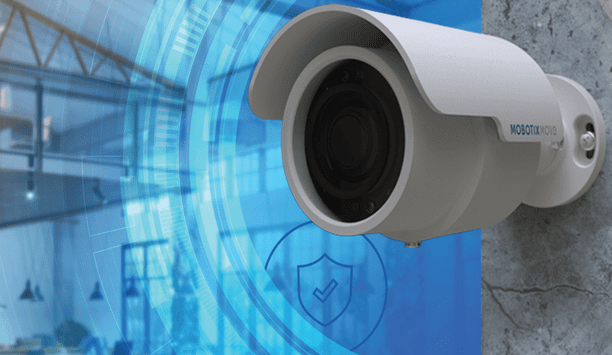
Intelligent video security solutions
Download
12 questions to ask your access control provider
Download
The borderless control room
Download
Preparing your organisation with quality situational awareness
Download
Making your surveillance cyber secure
Download
Intelligent video security solutions
Download
12 questions to ask your access control provider
Download
The borderless control room
Download


Using artificial intelligence (AI) to automate physical security systems
Download
A modern guide to data loss prevention
Download
7 proven solutions for law enforcement key control and asset management
Download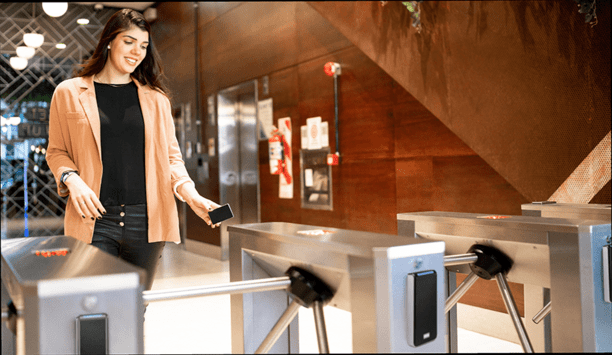
The truth behind 9 mobile access myths
Download
Access control system planning phase 2
Download

